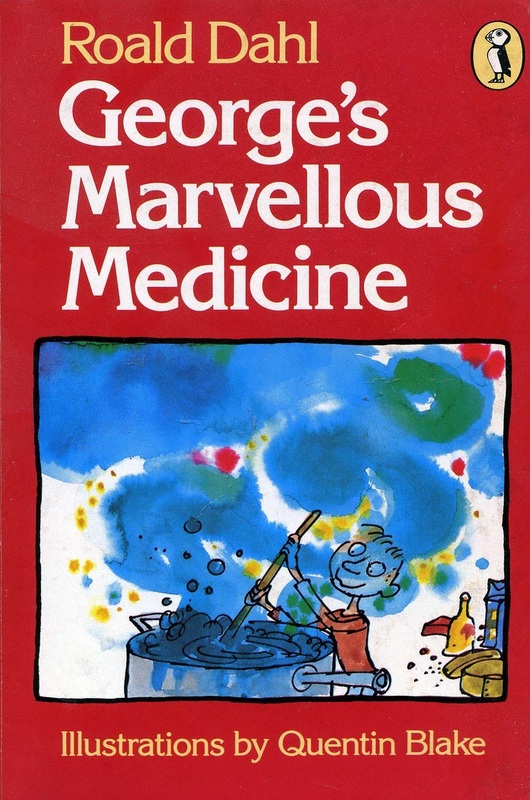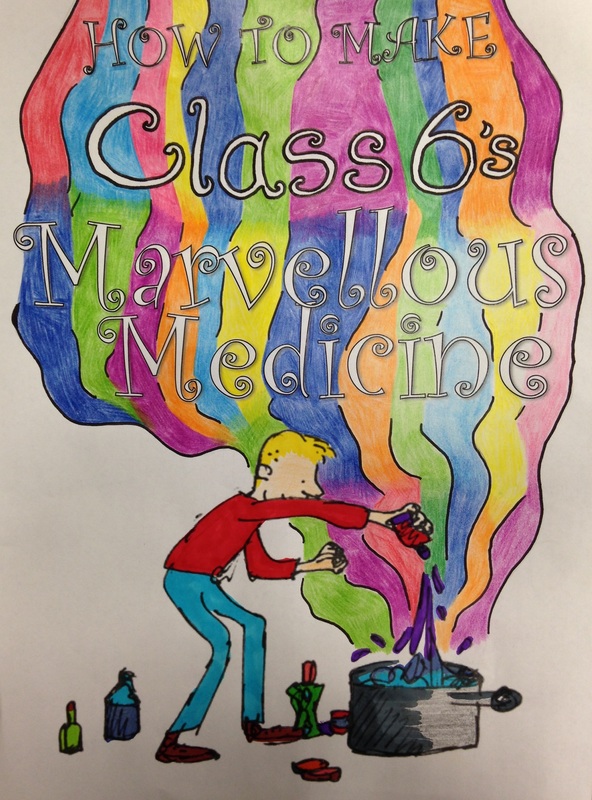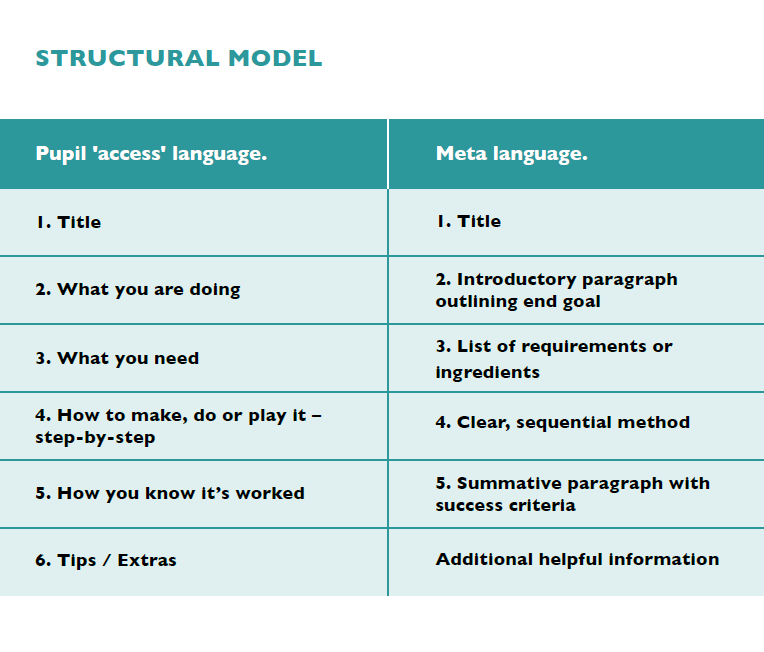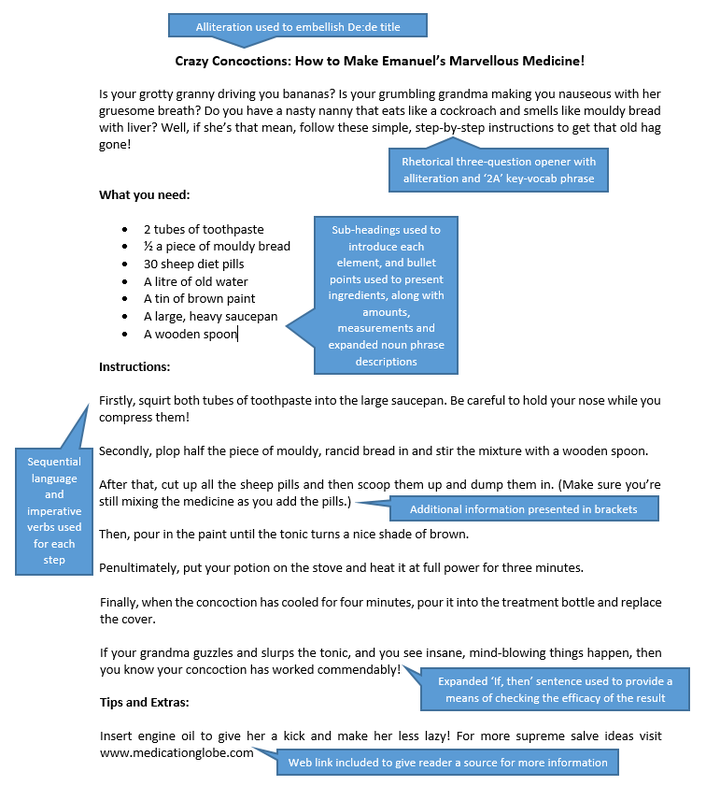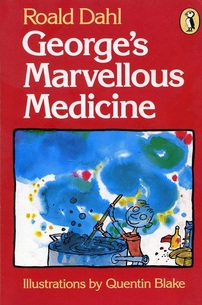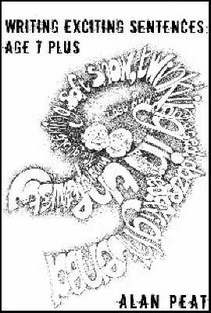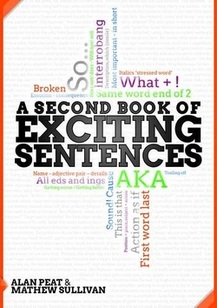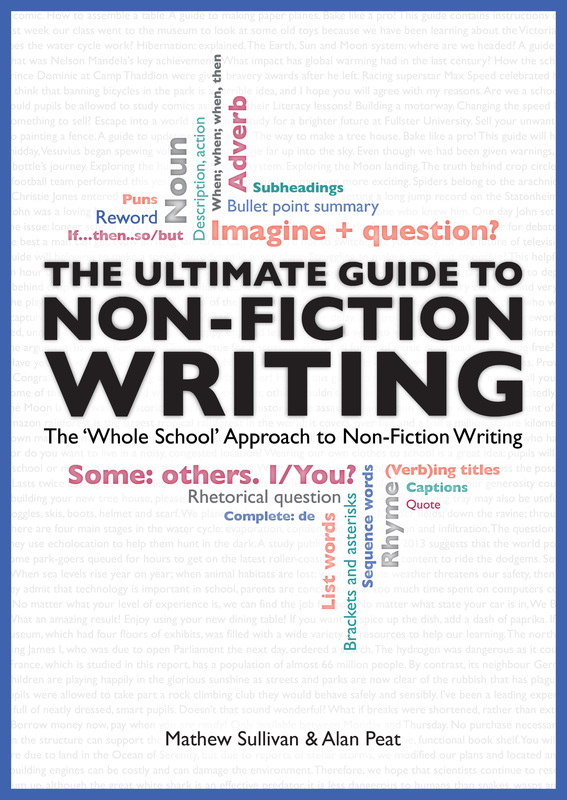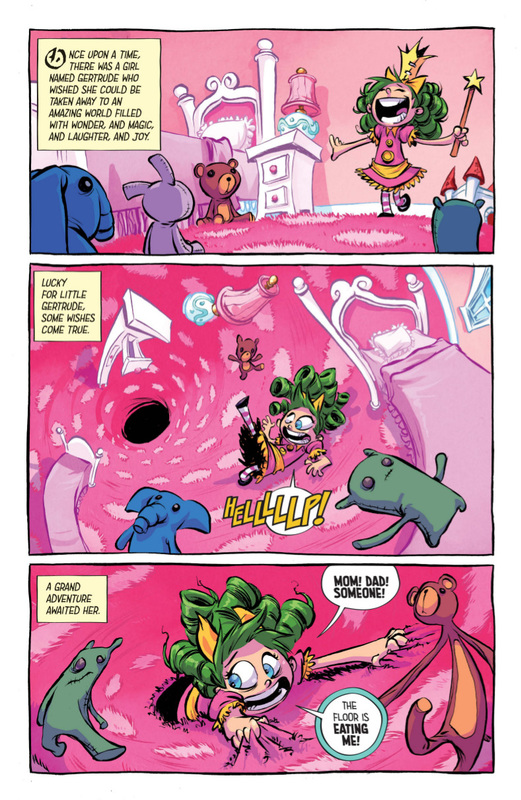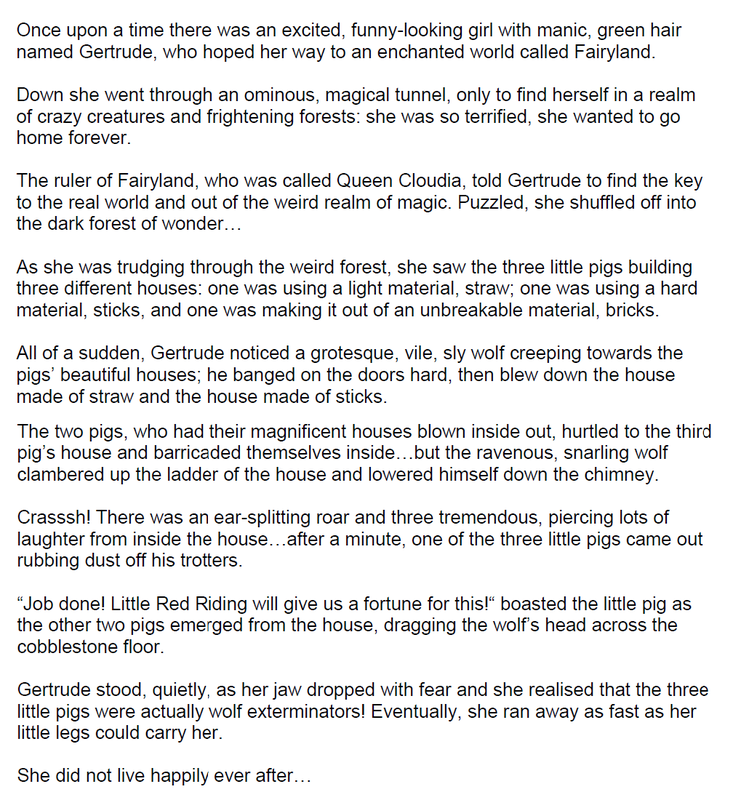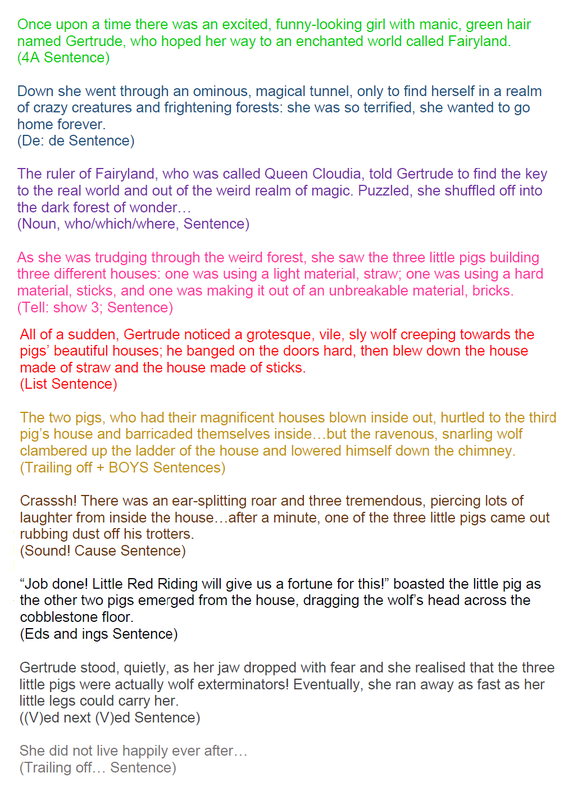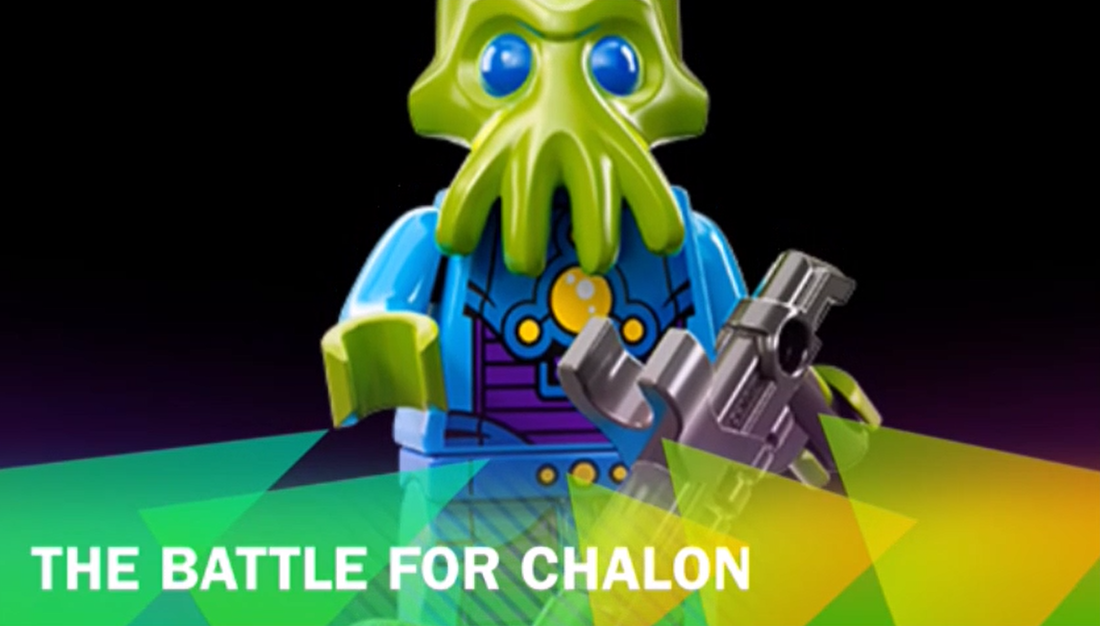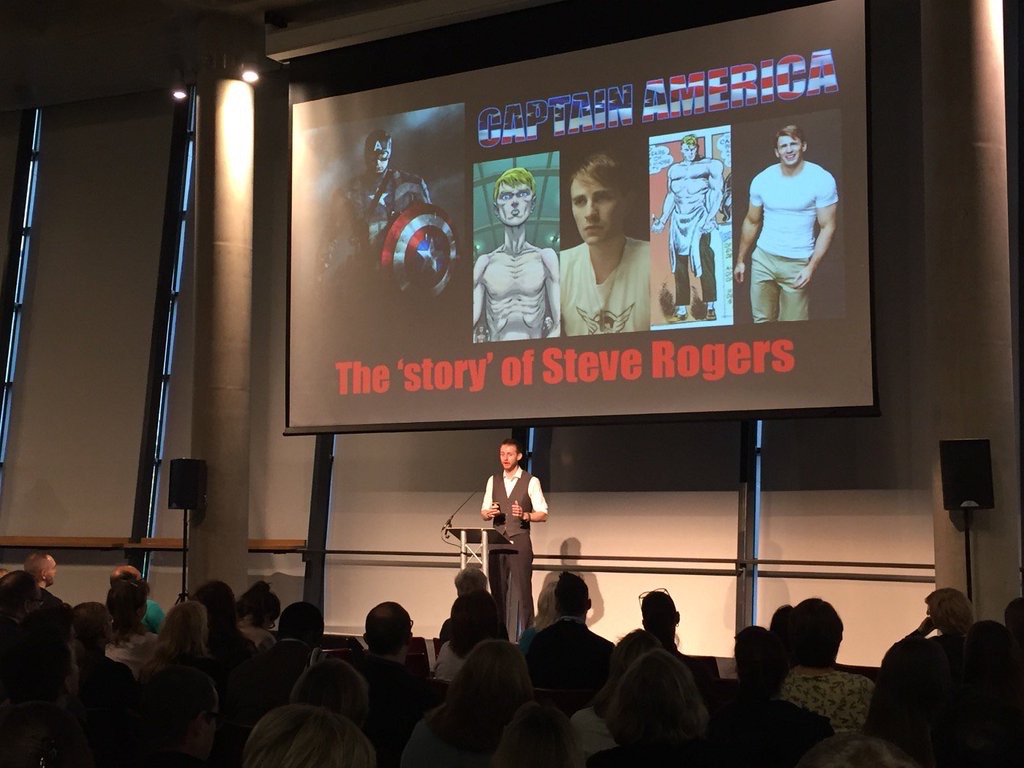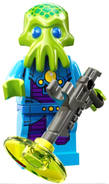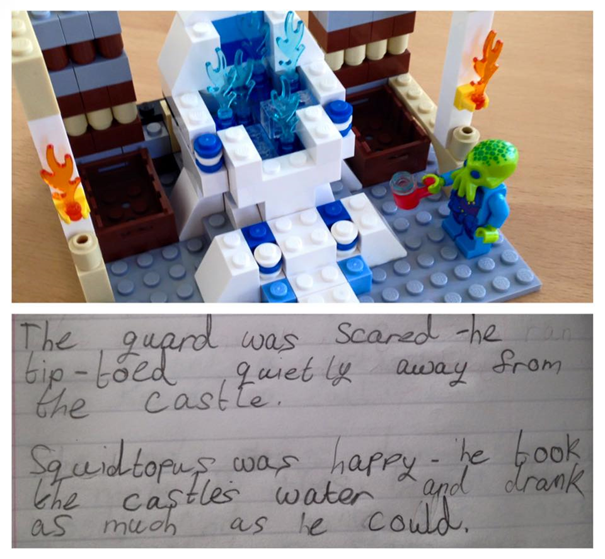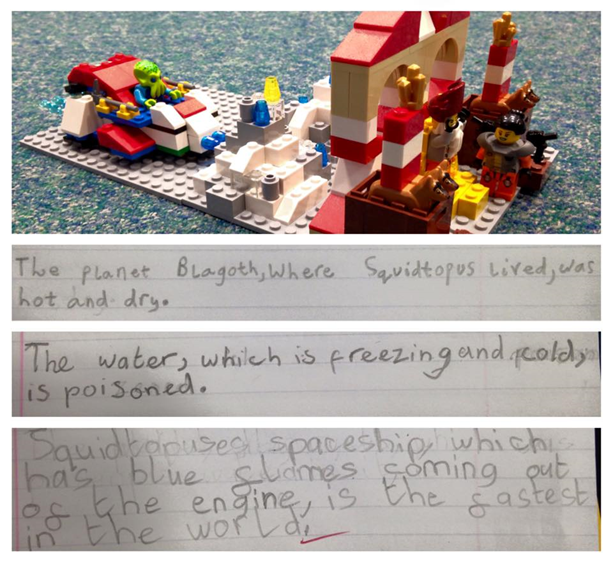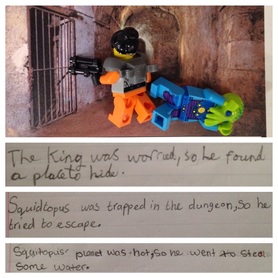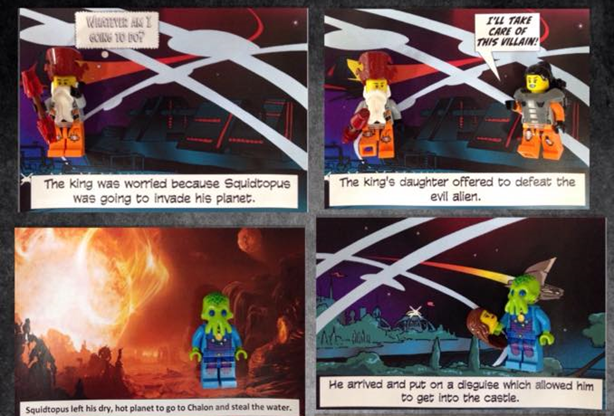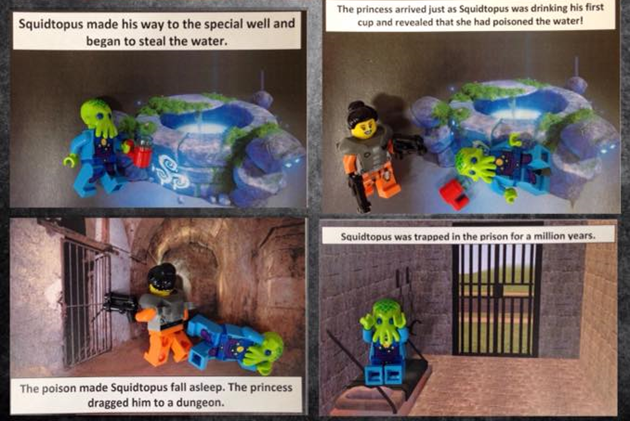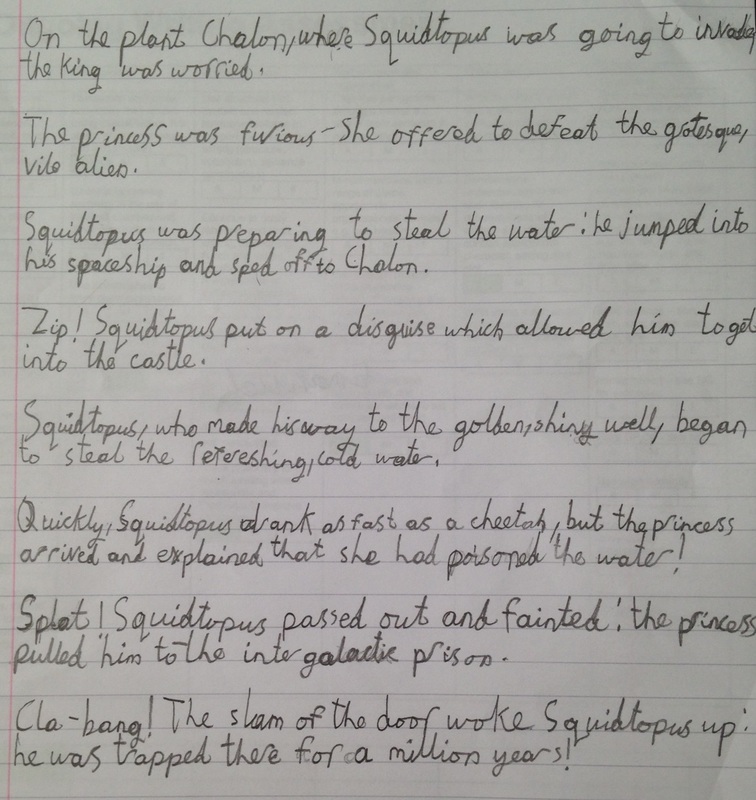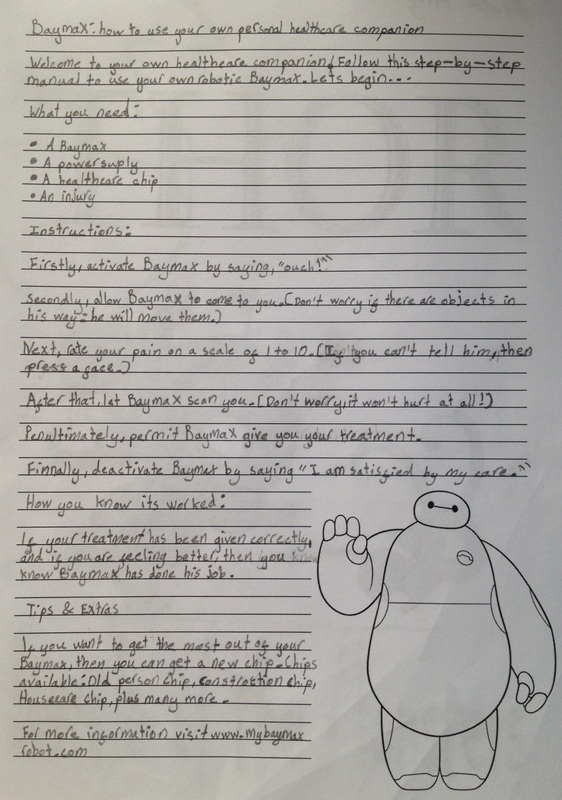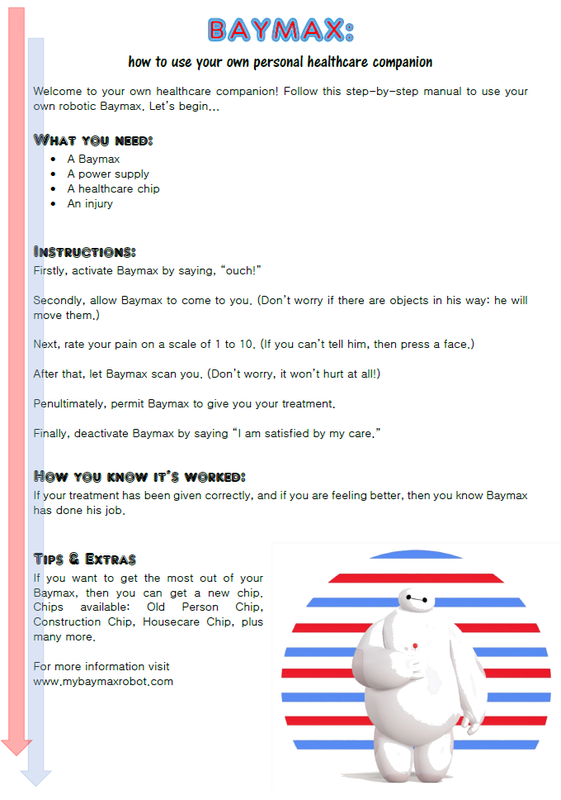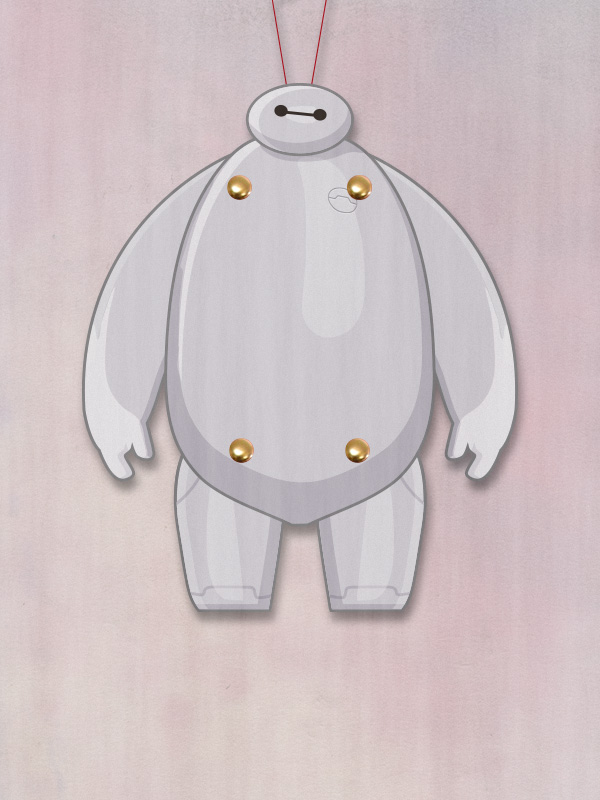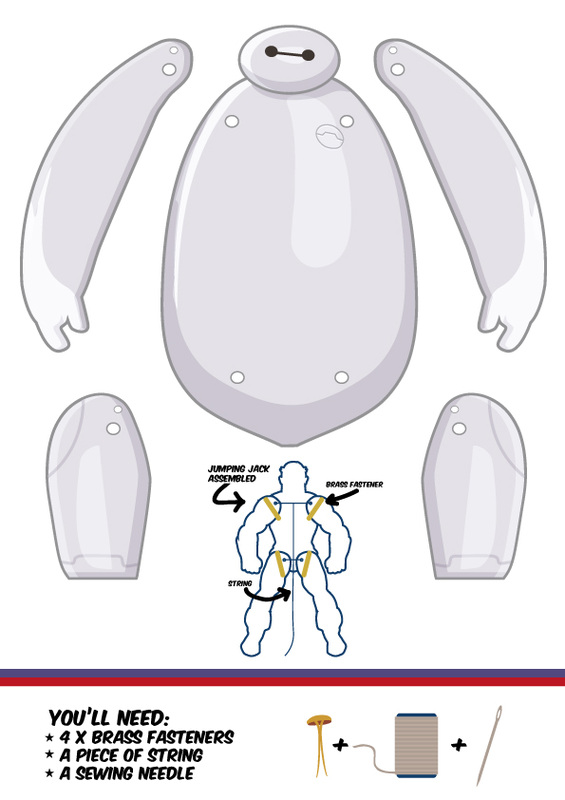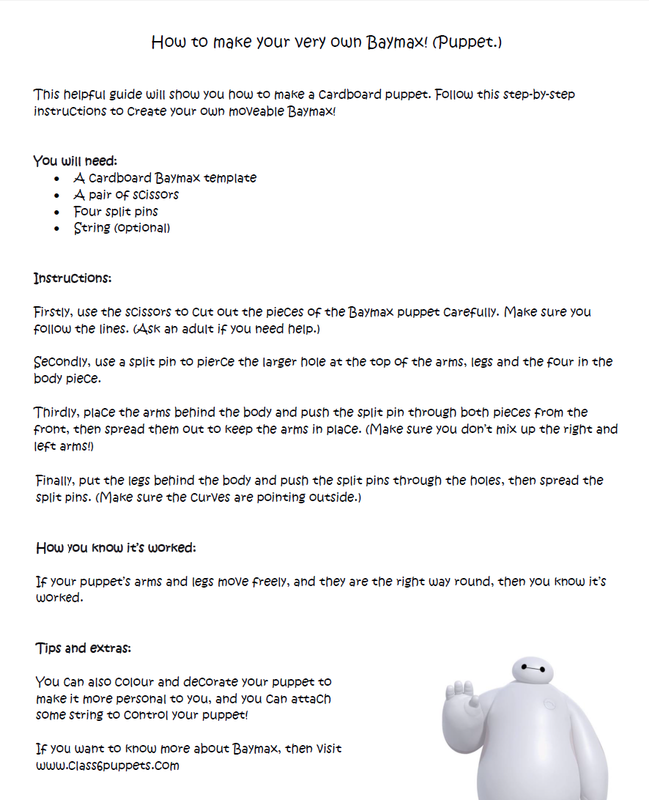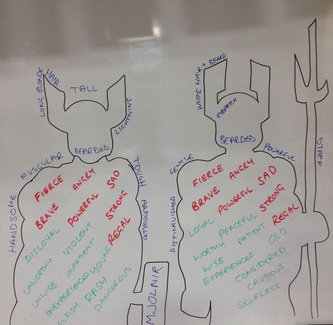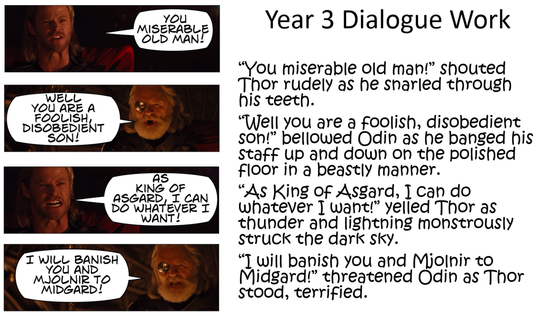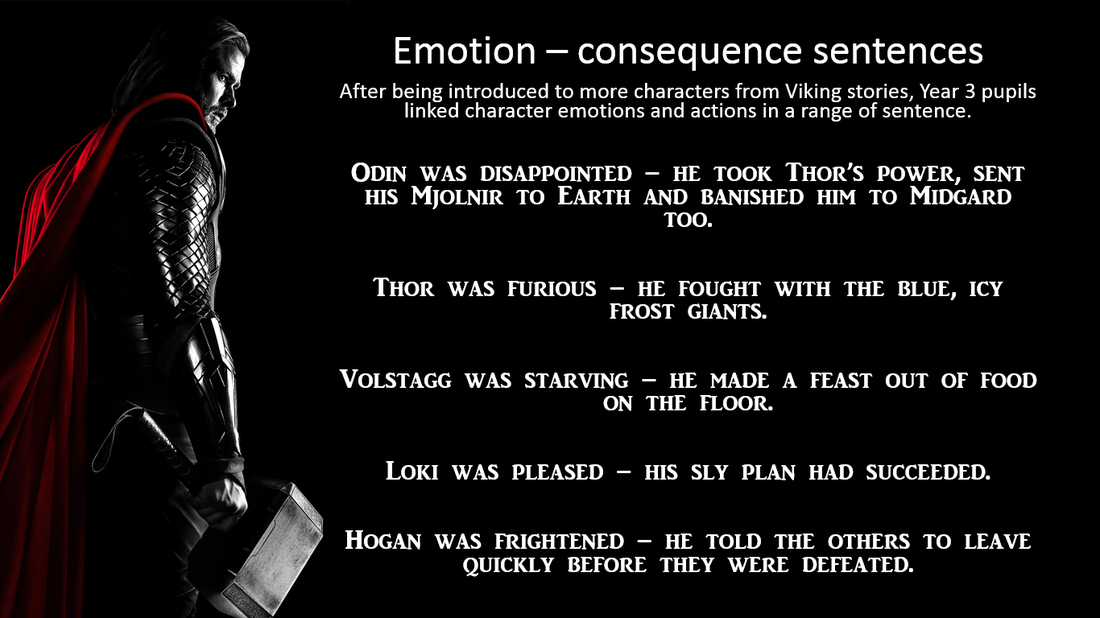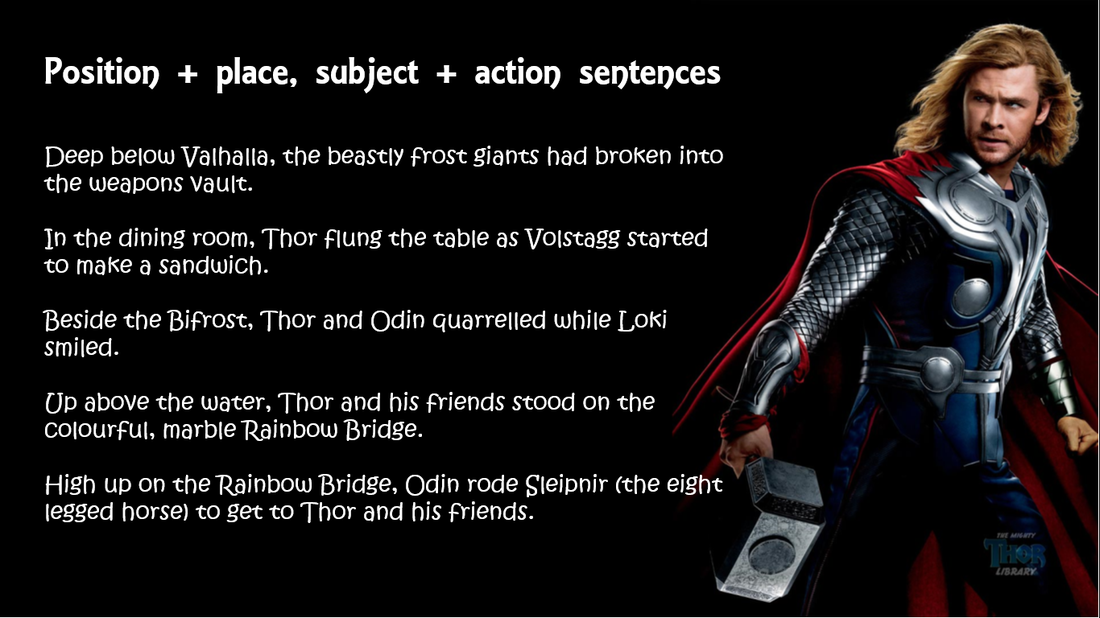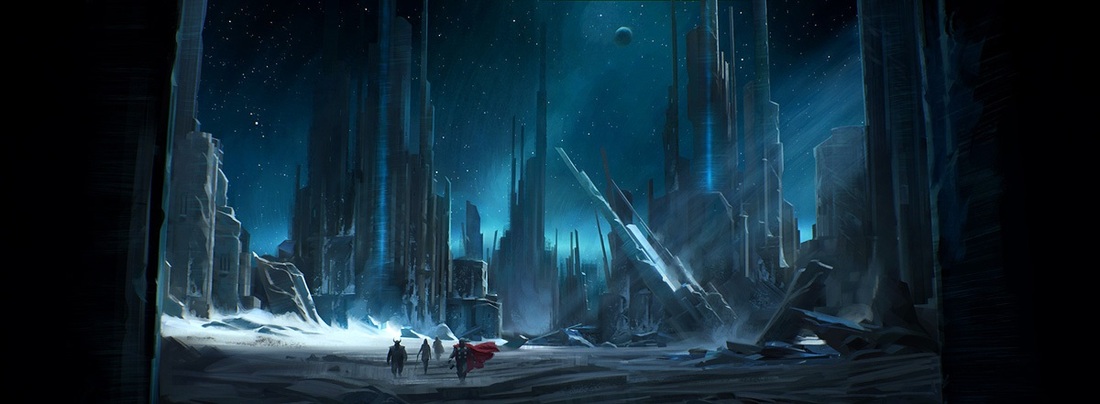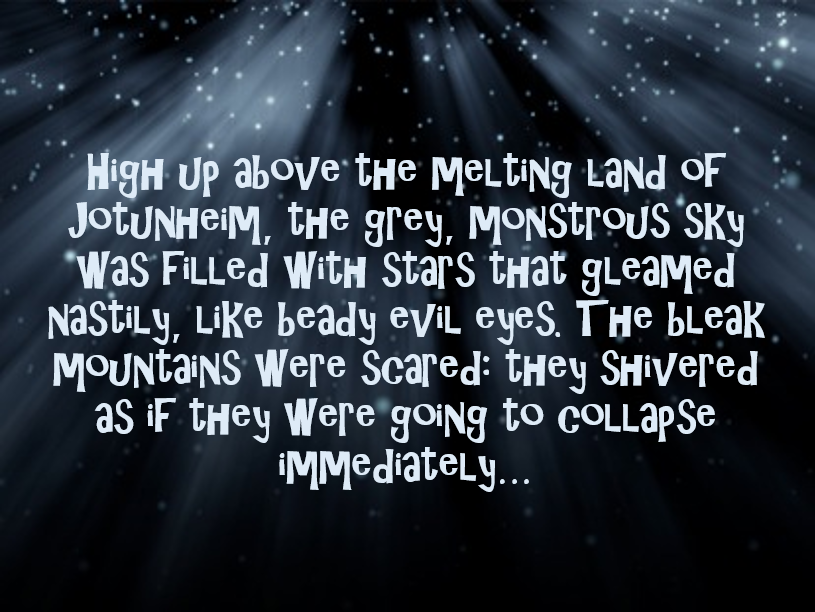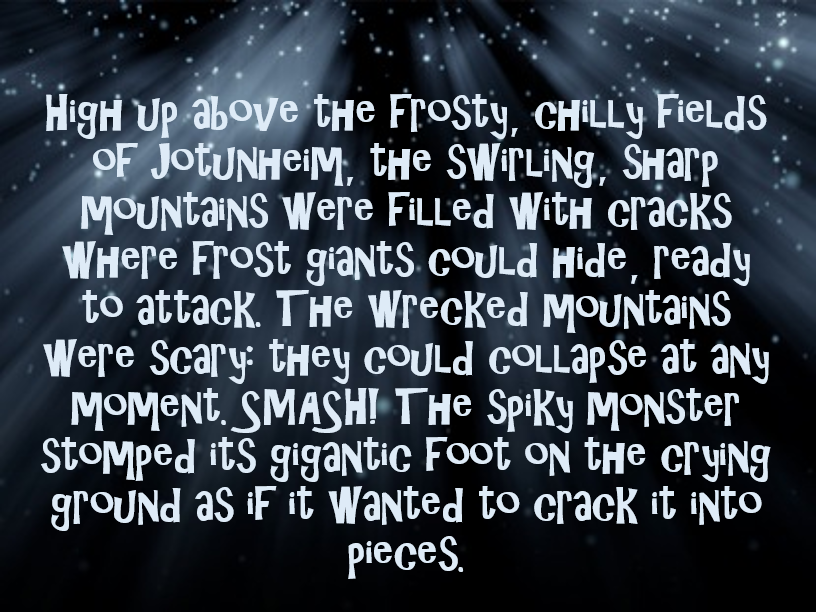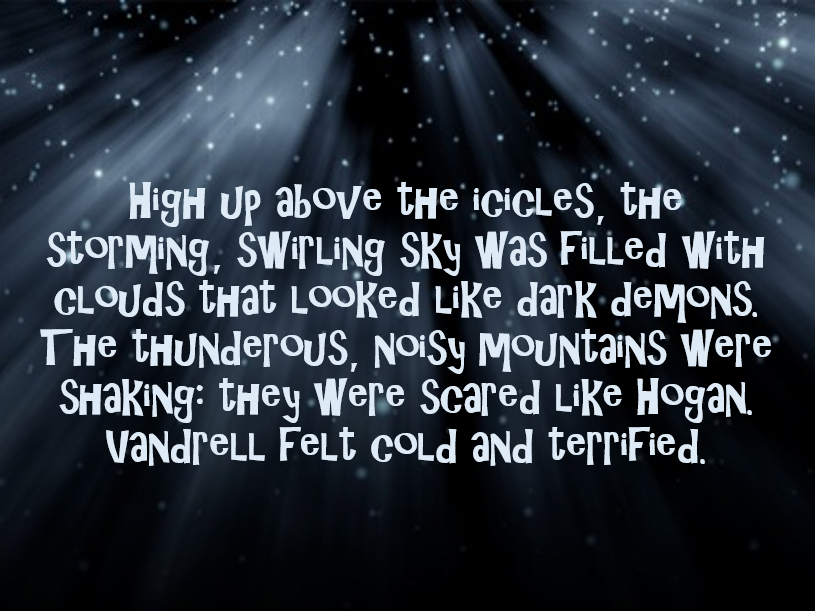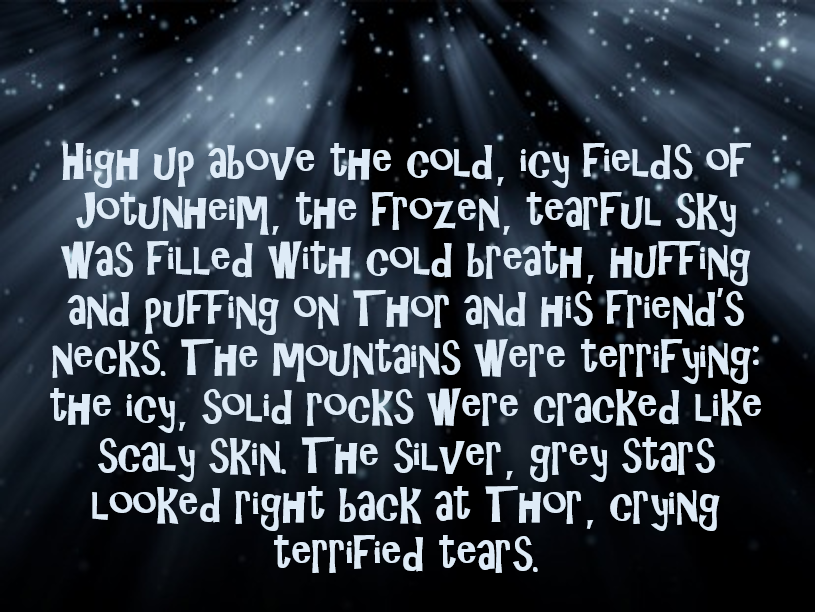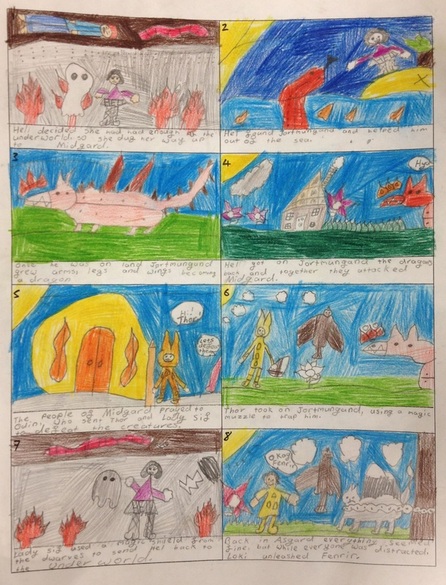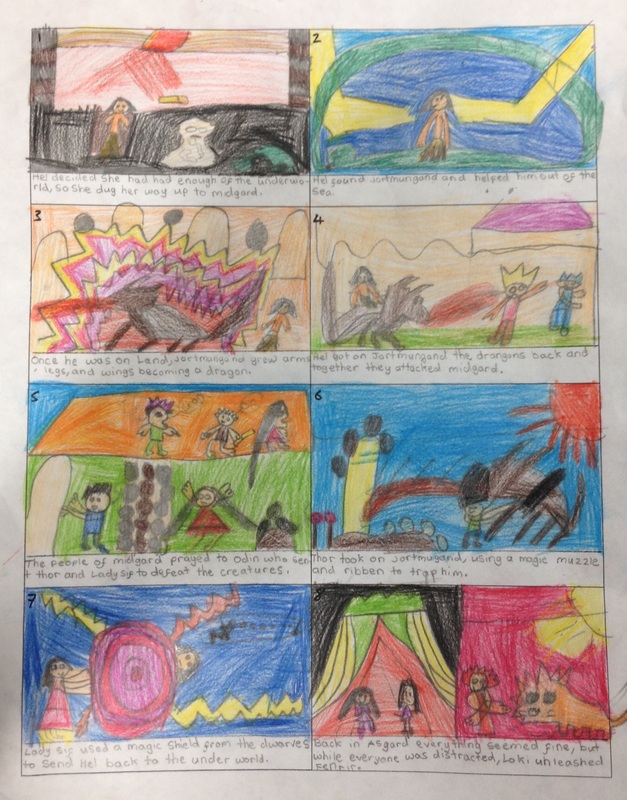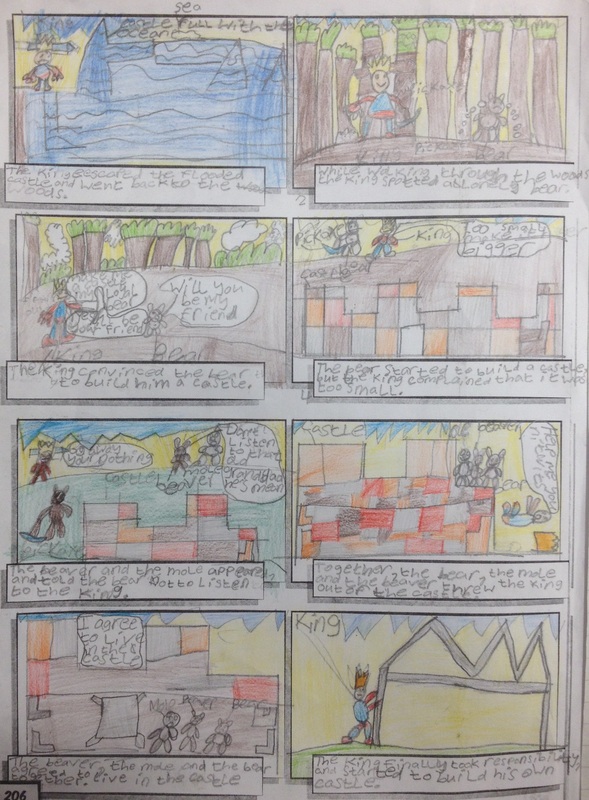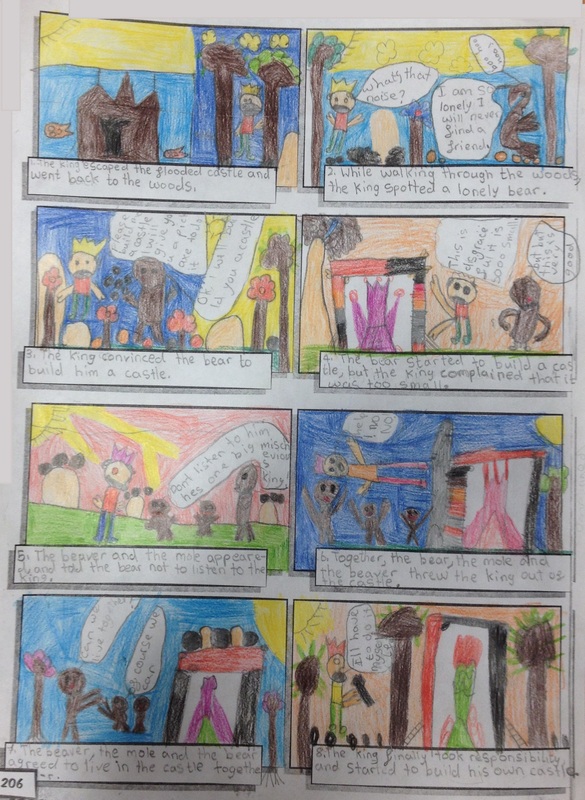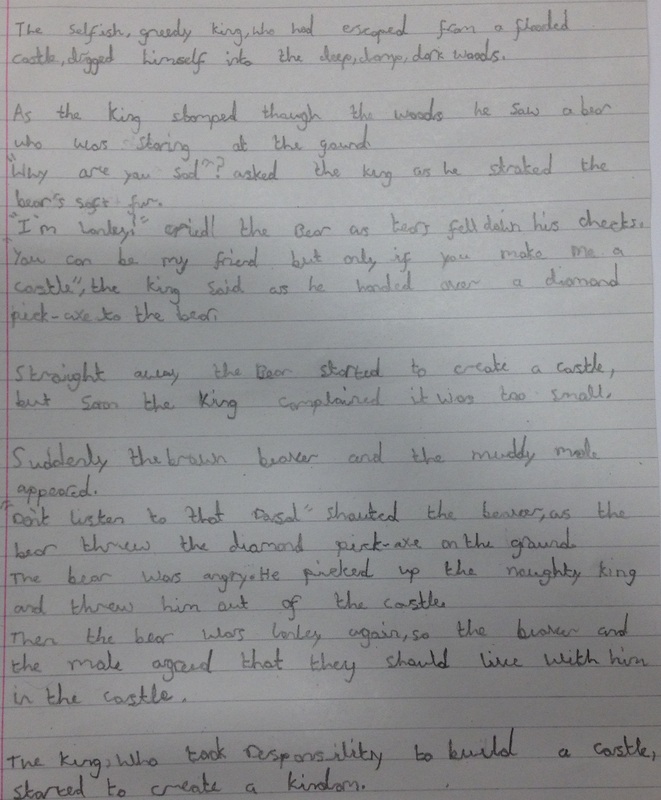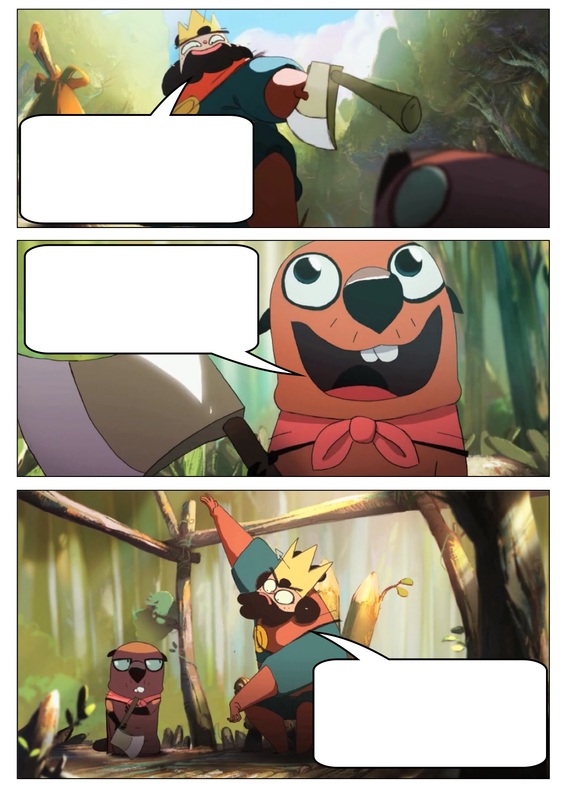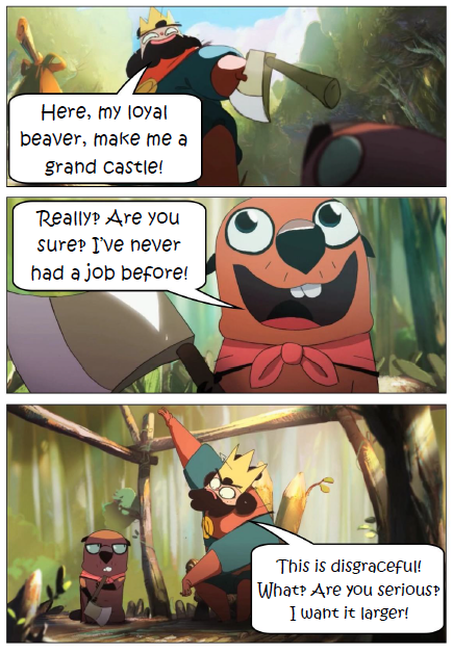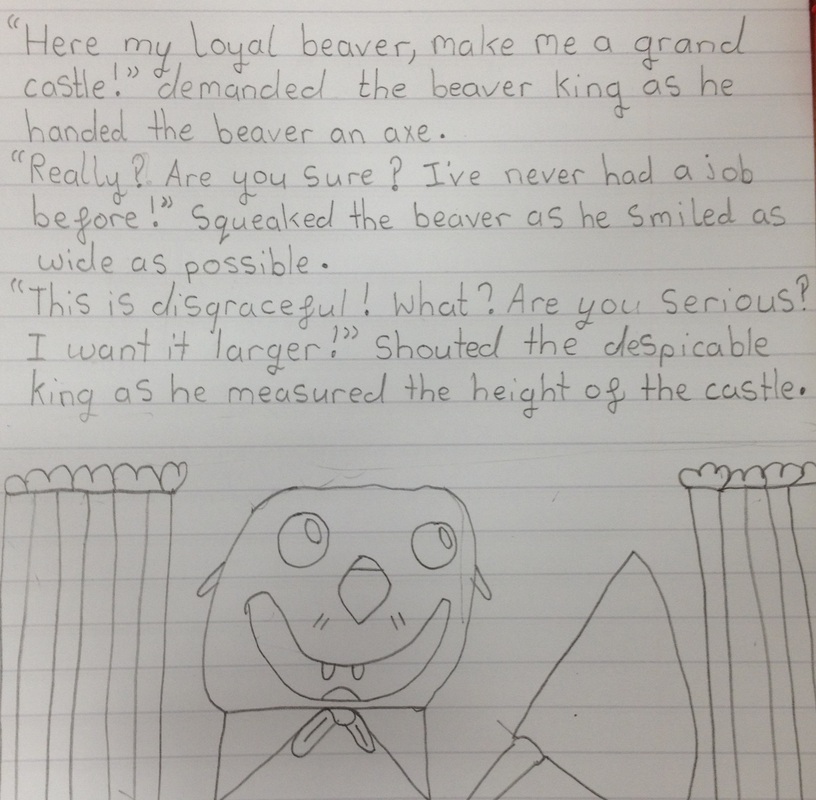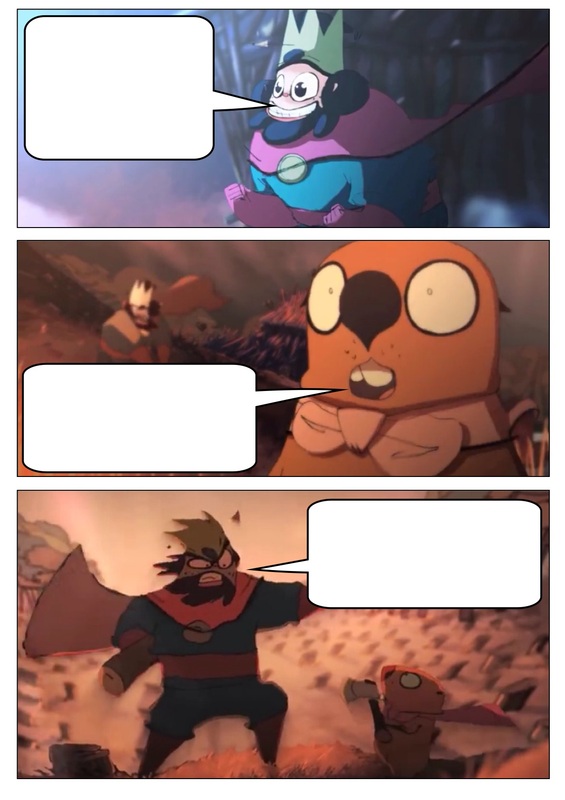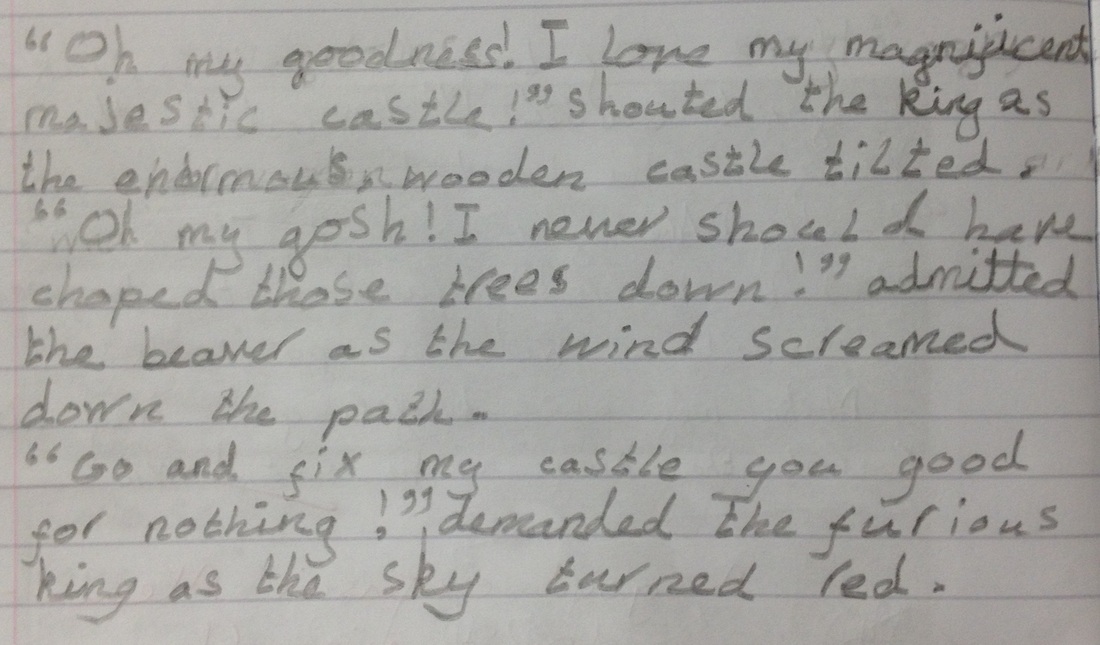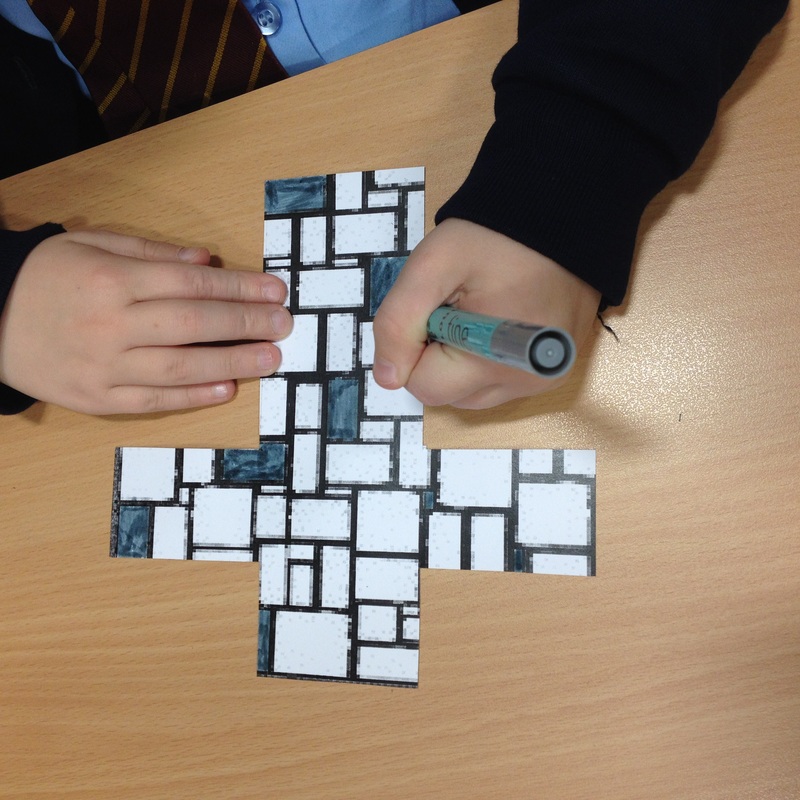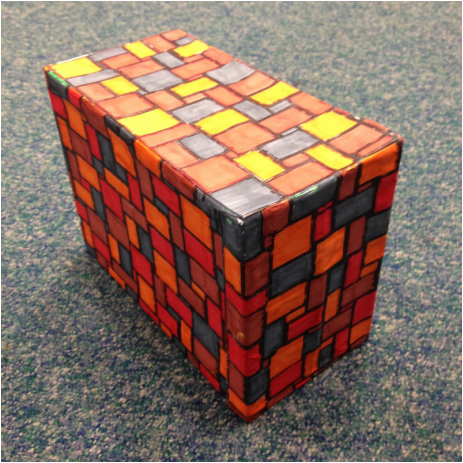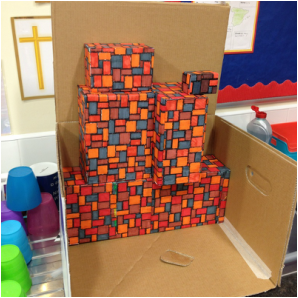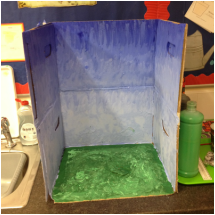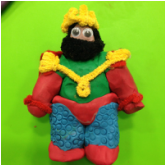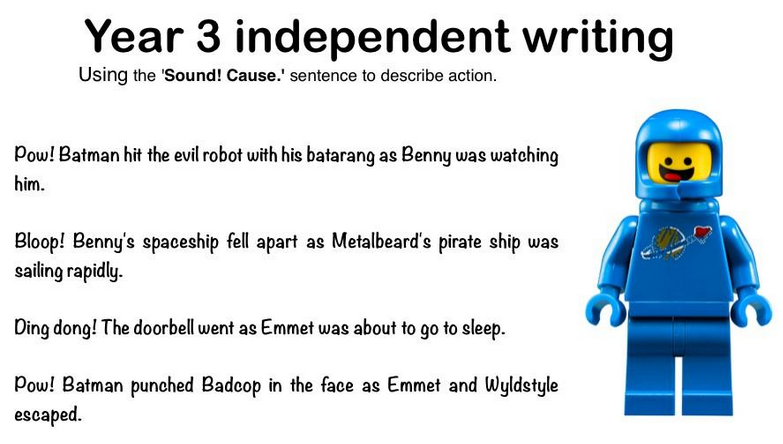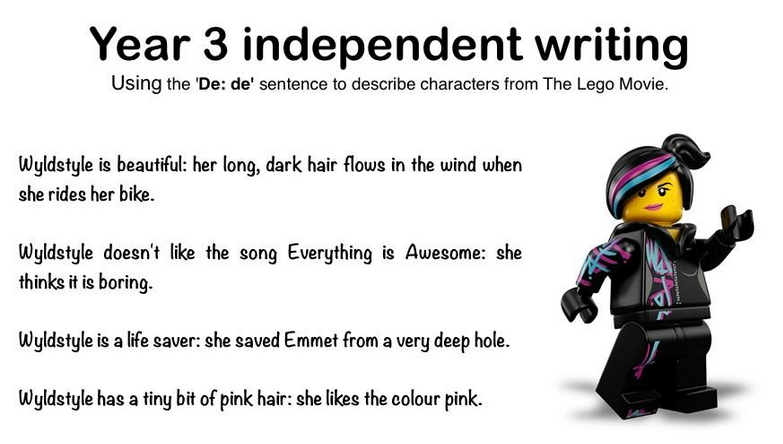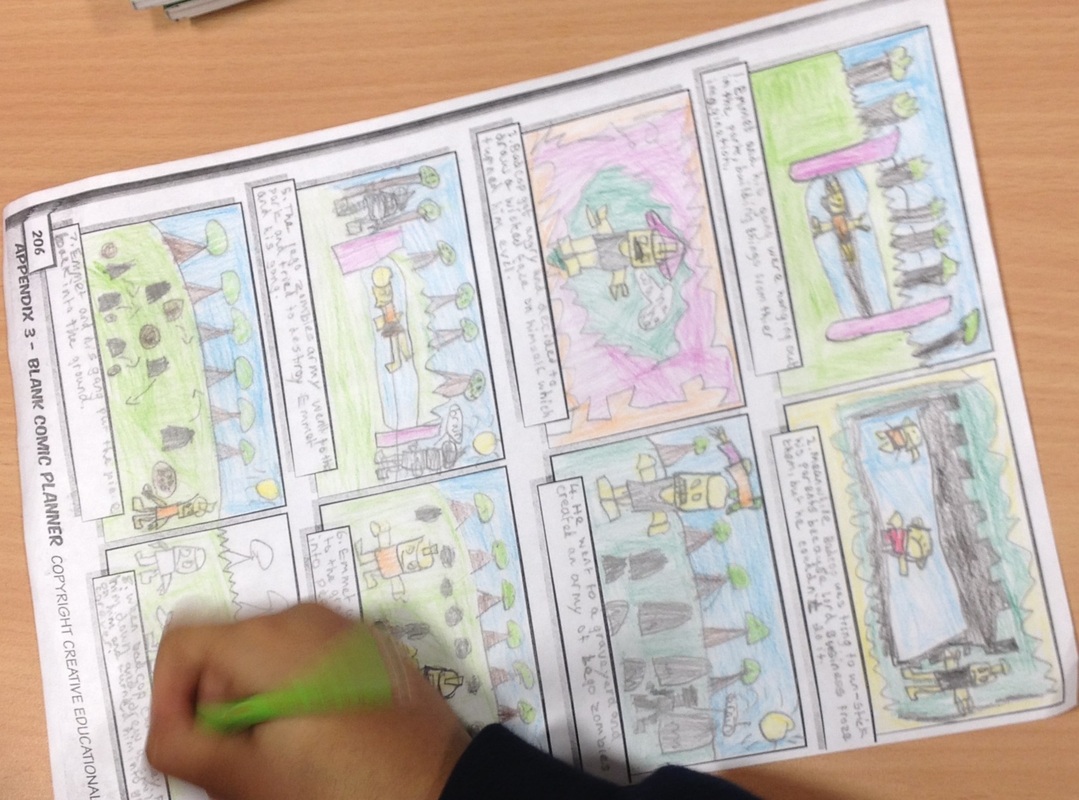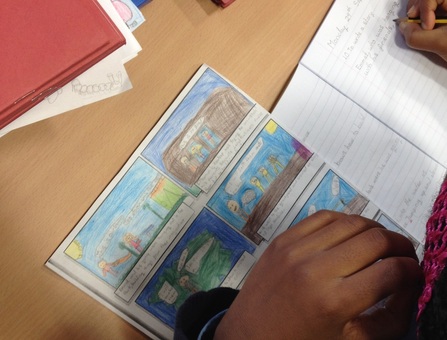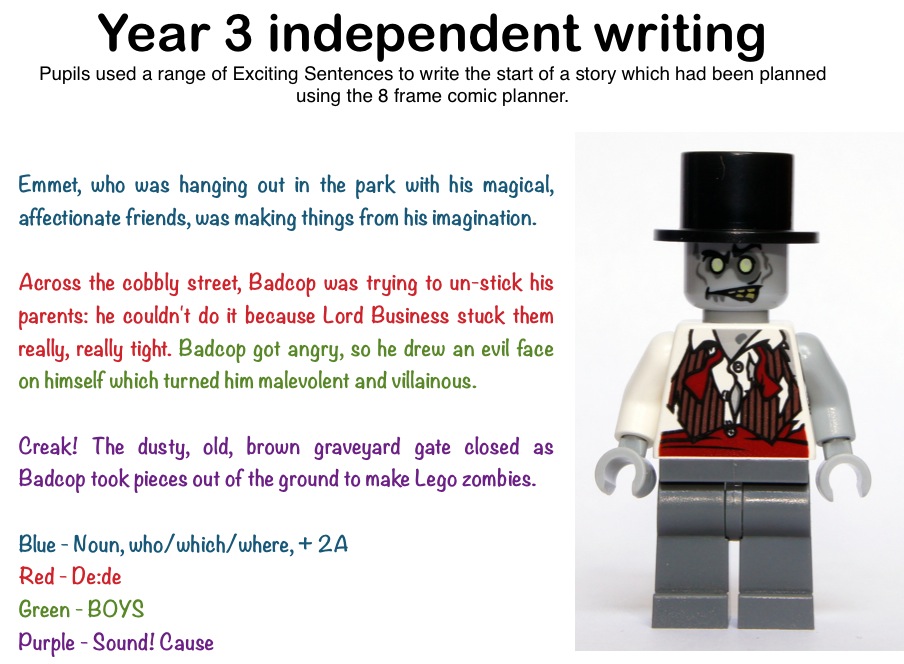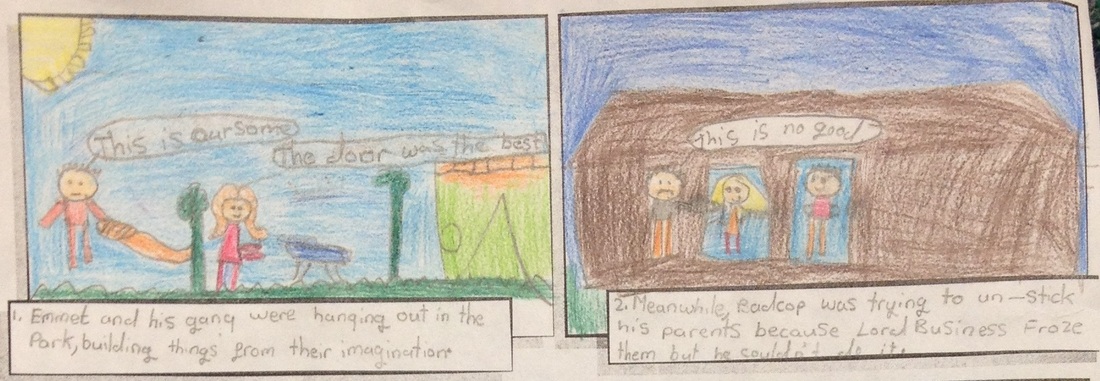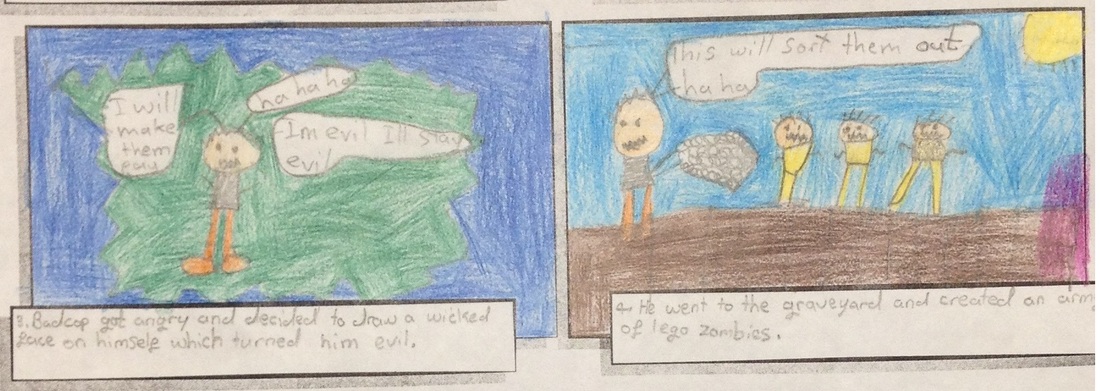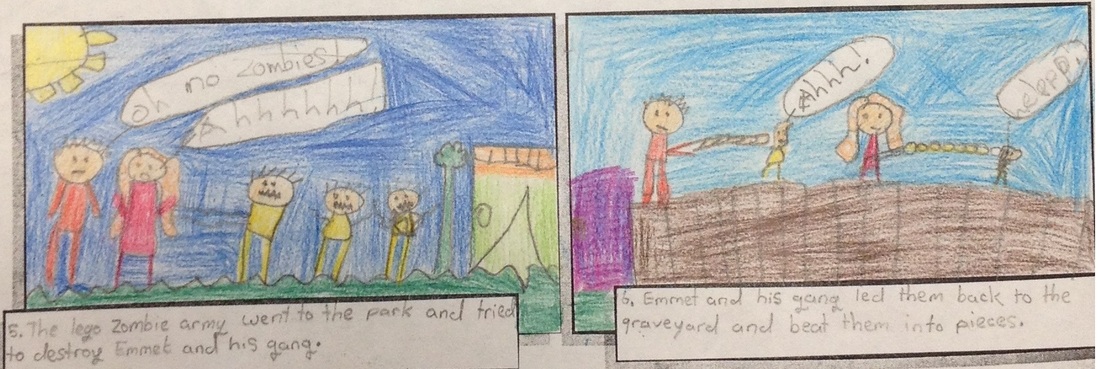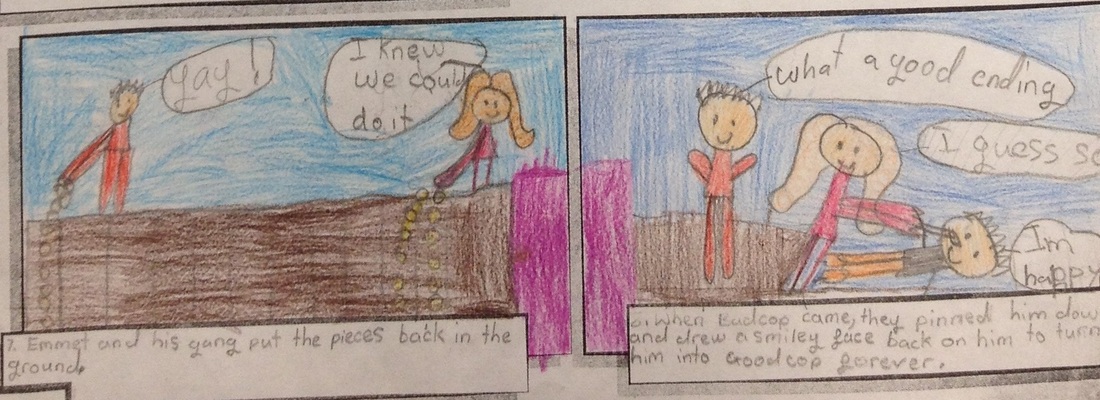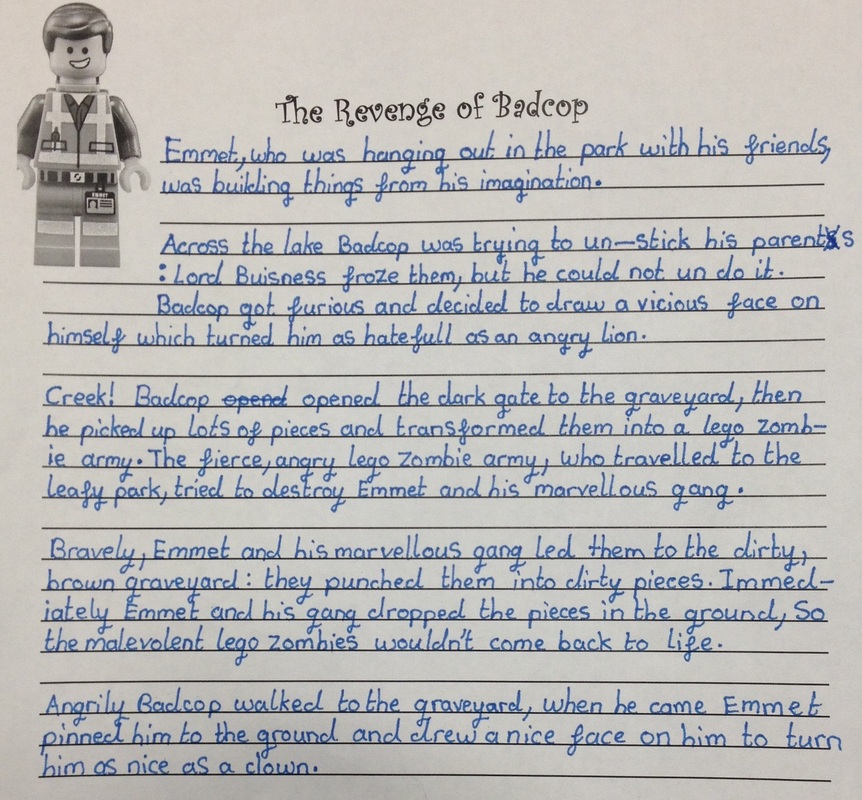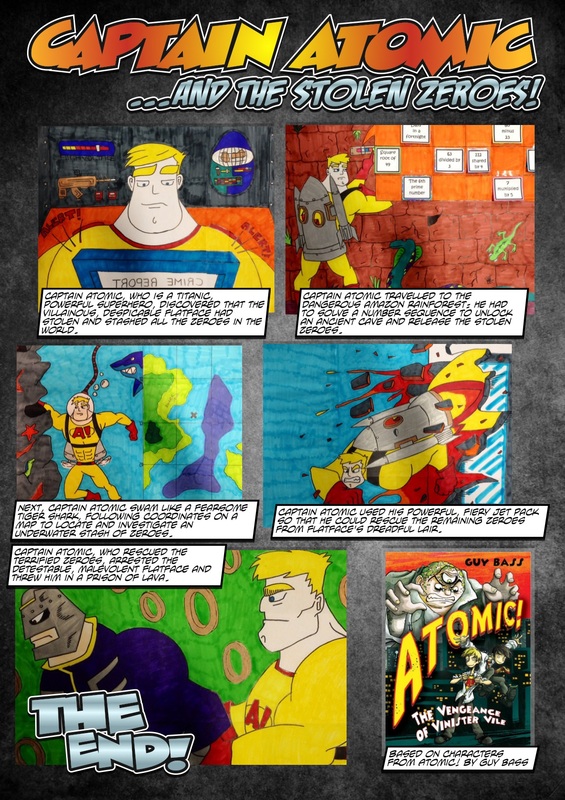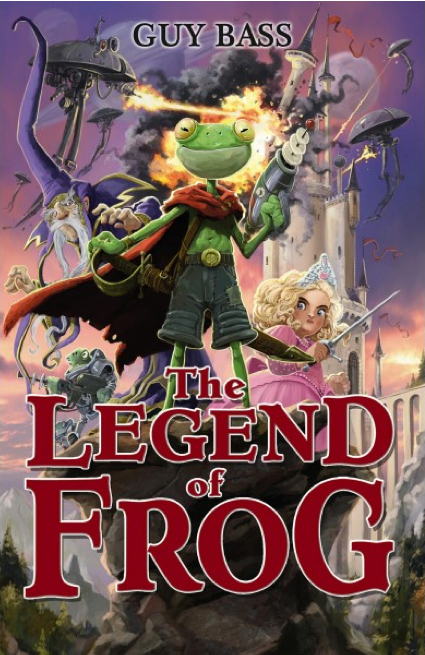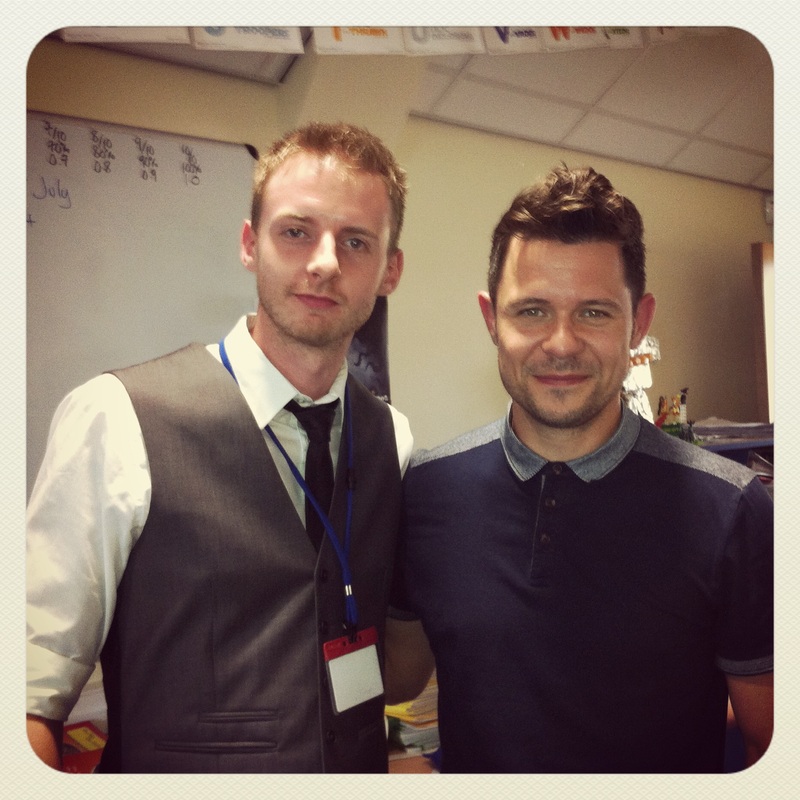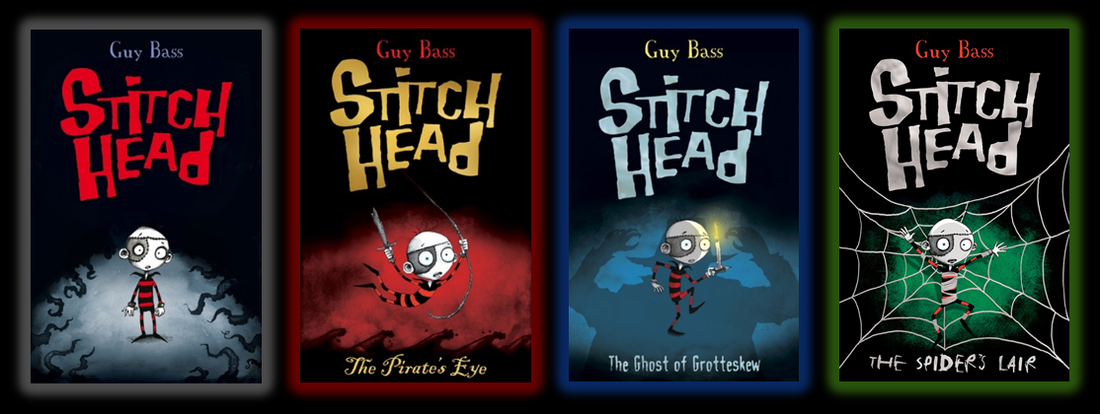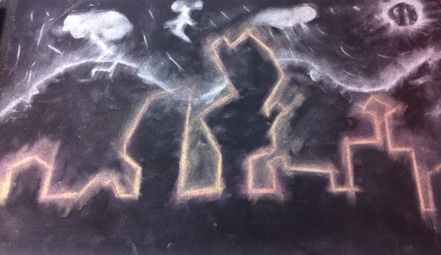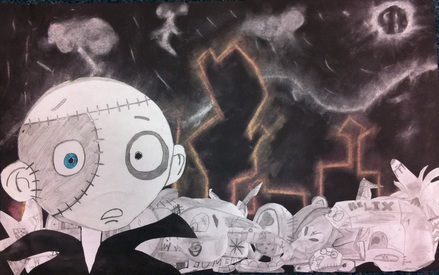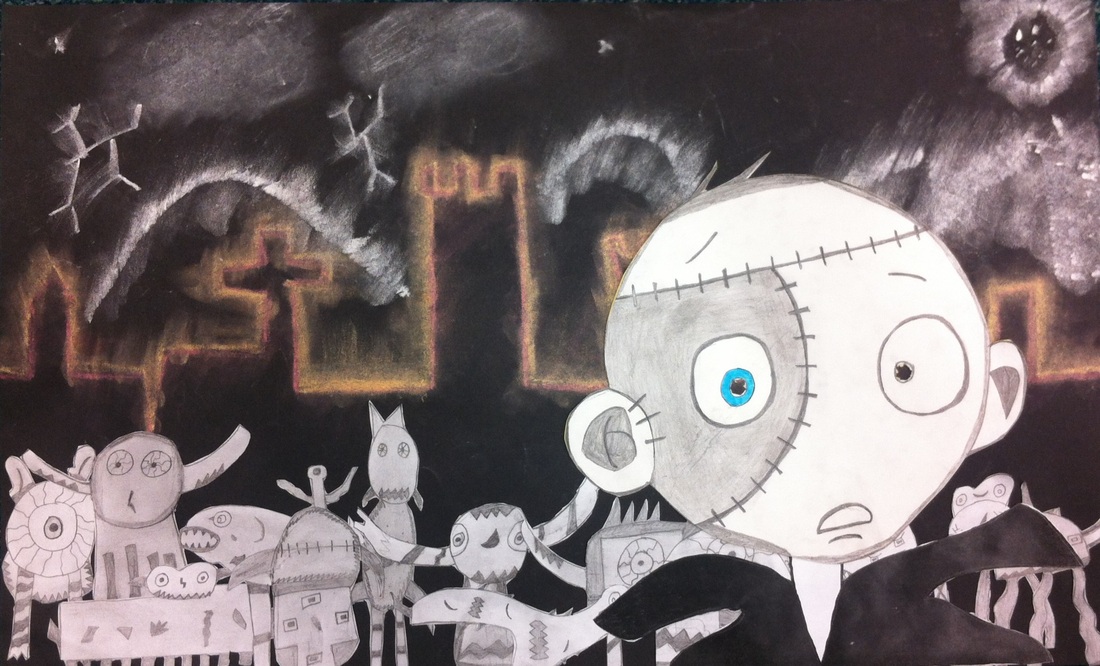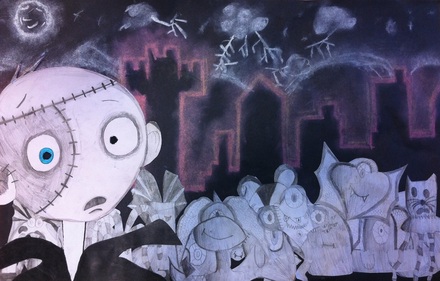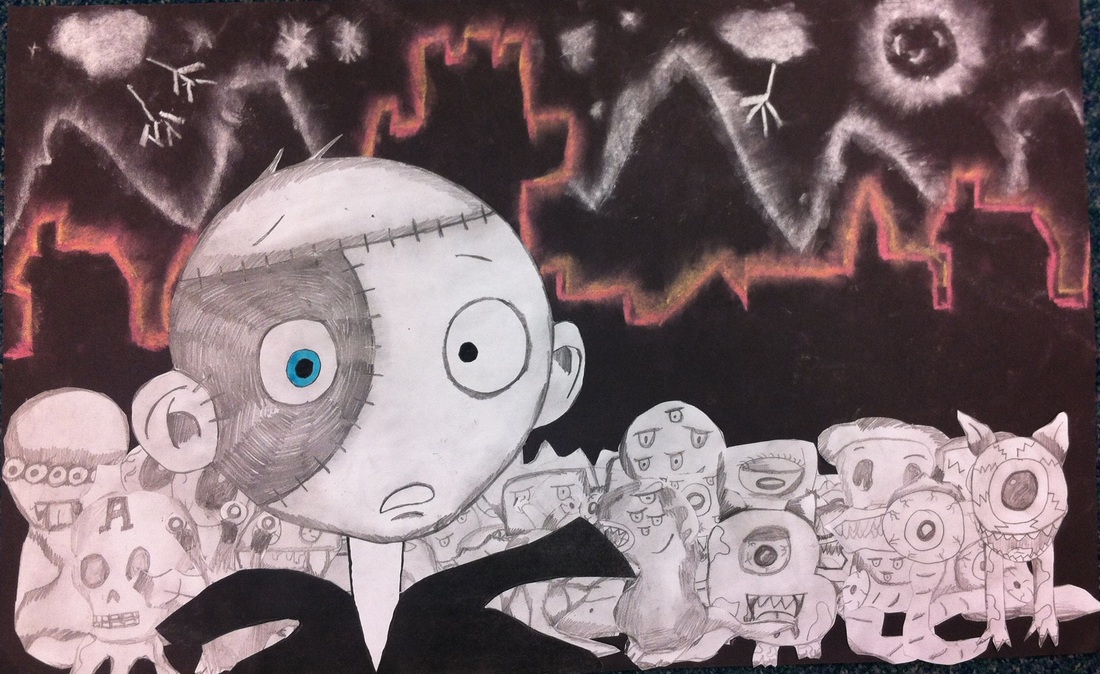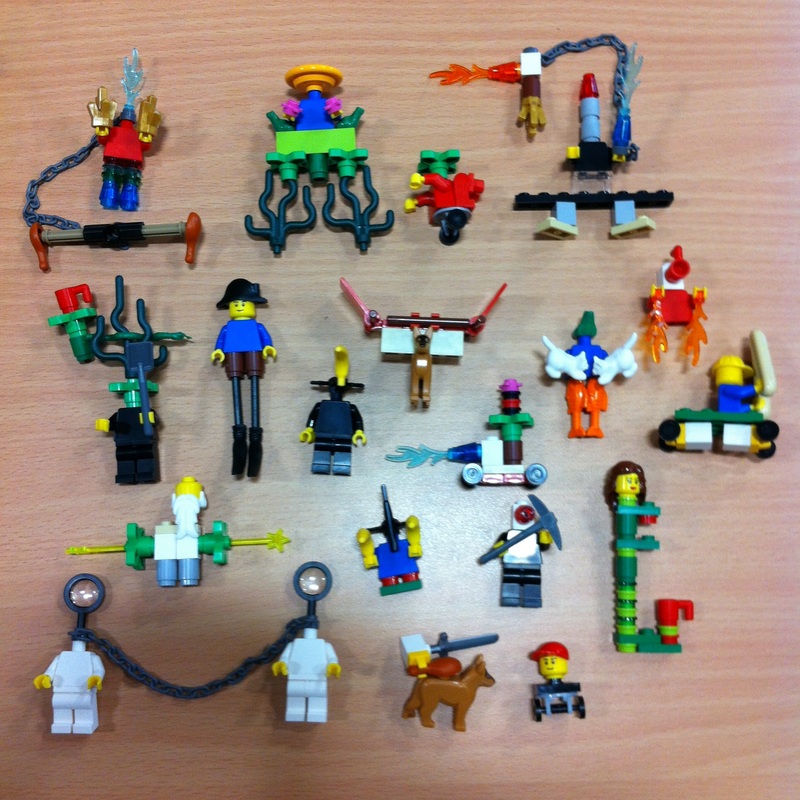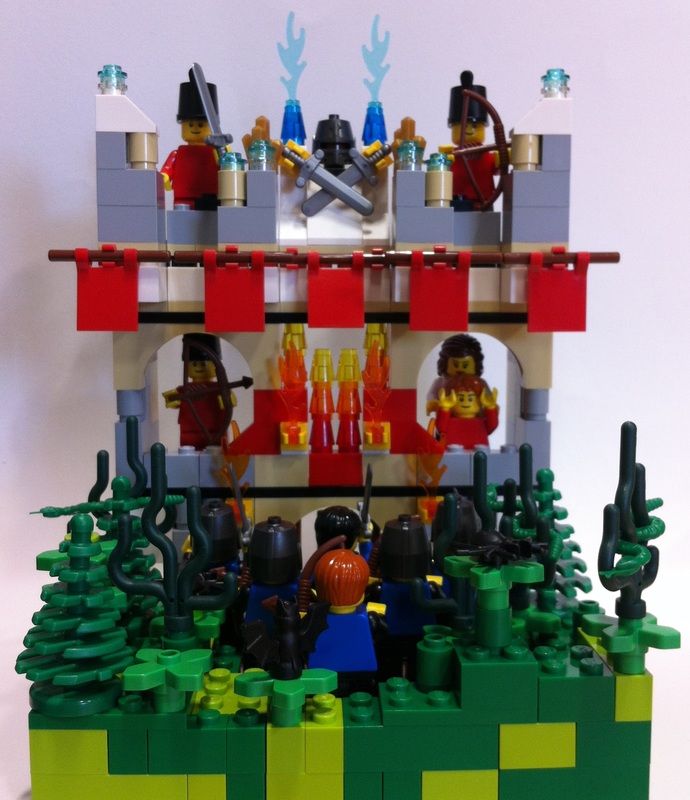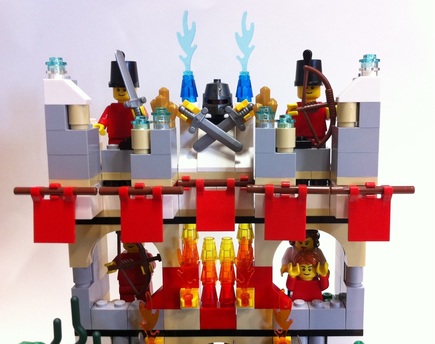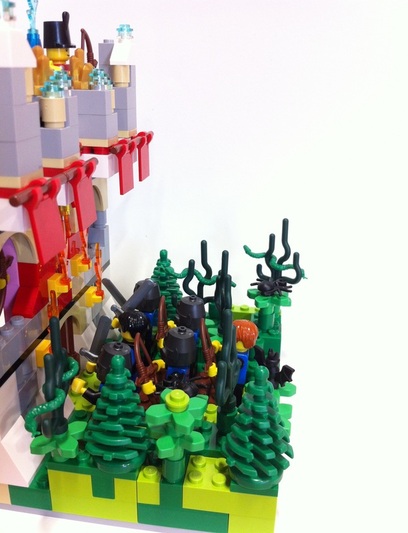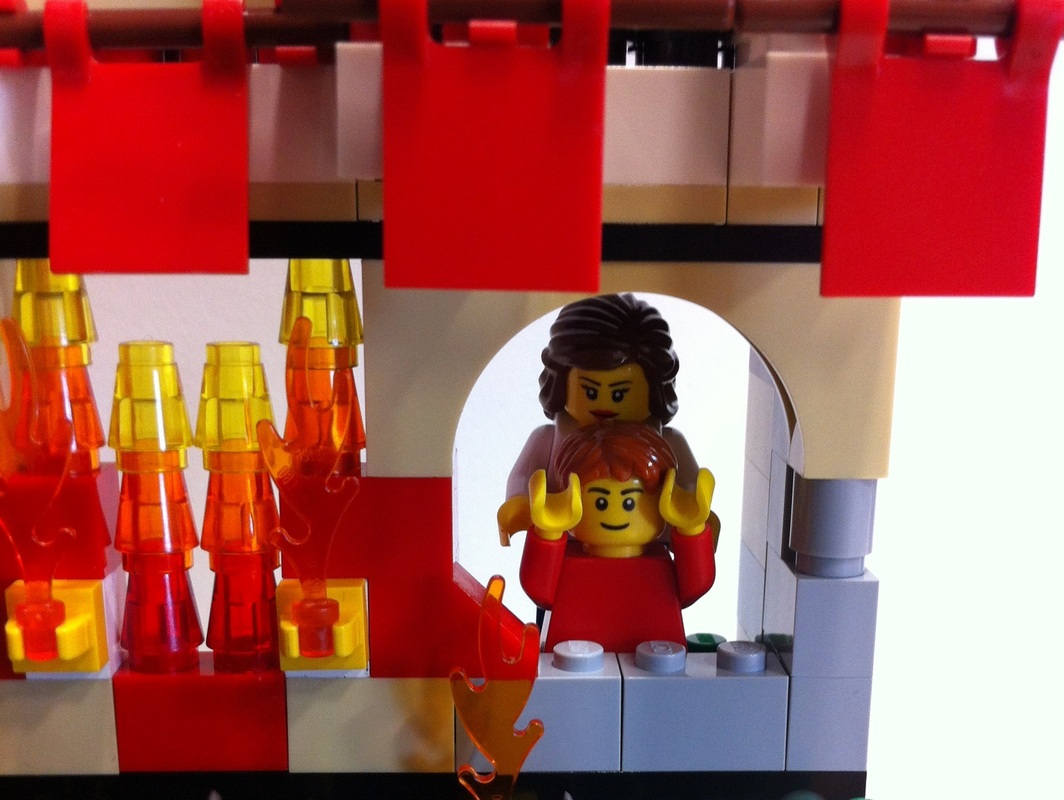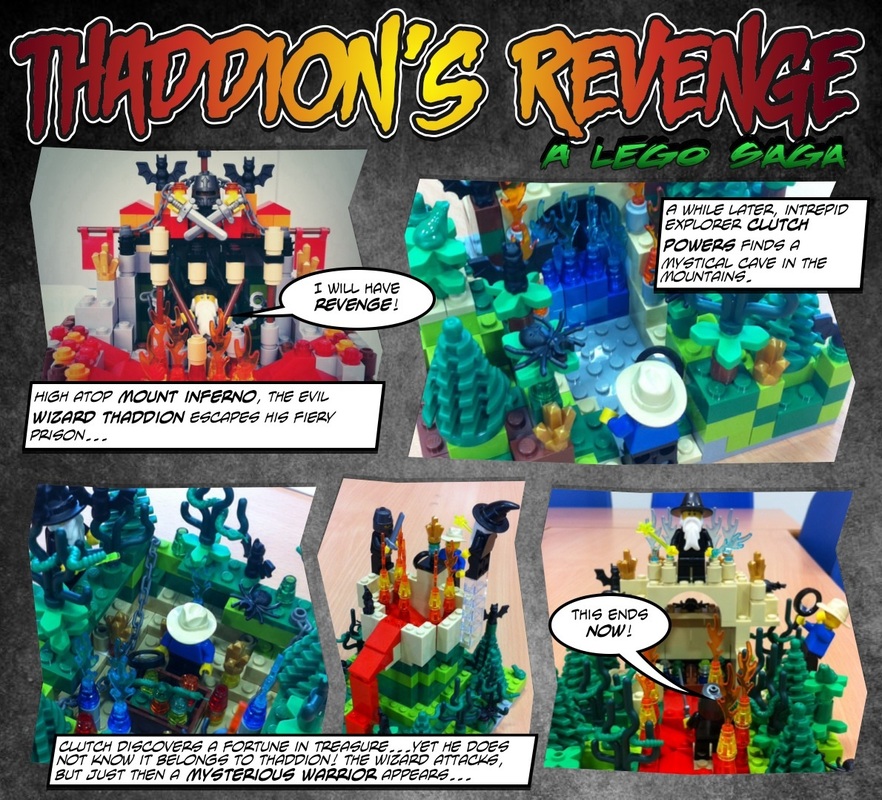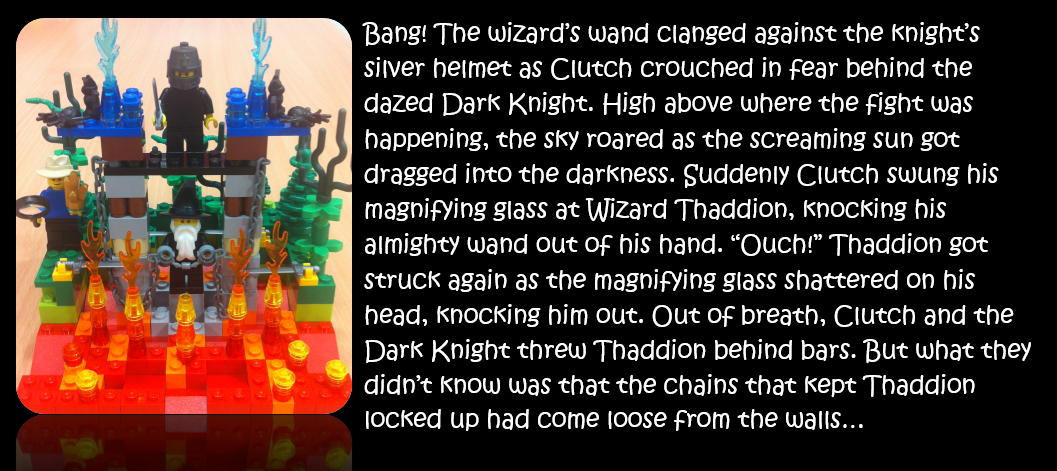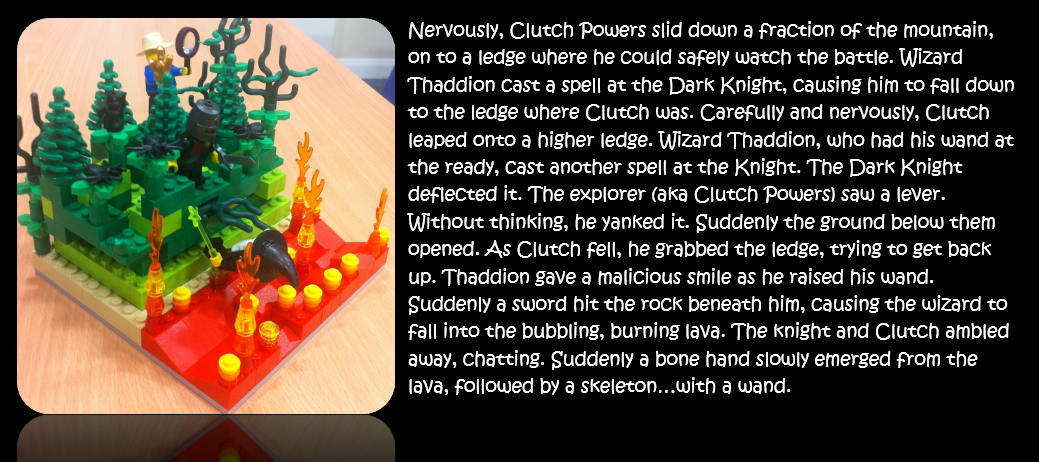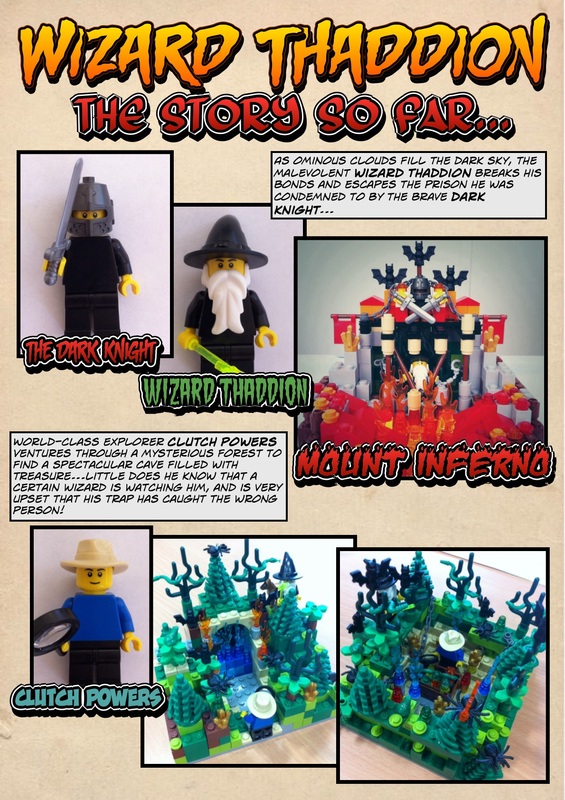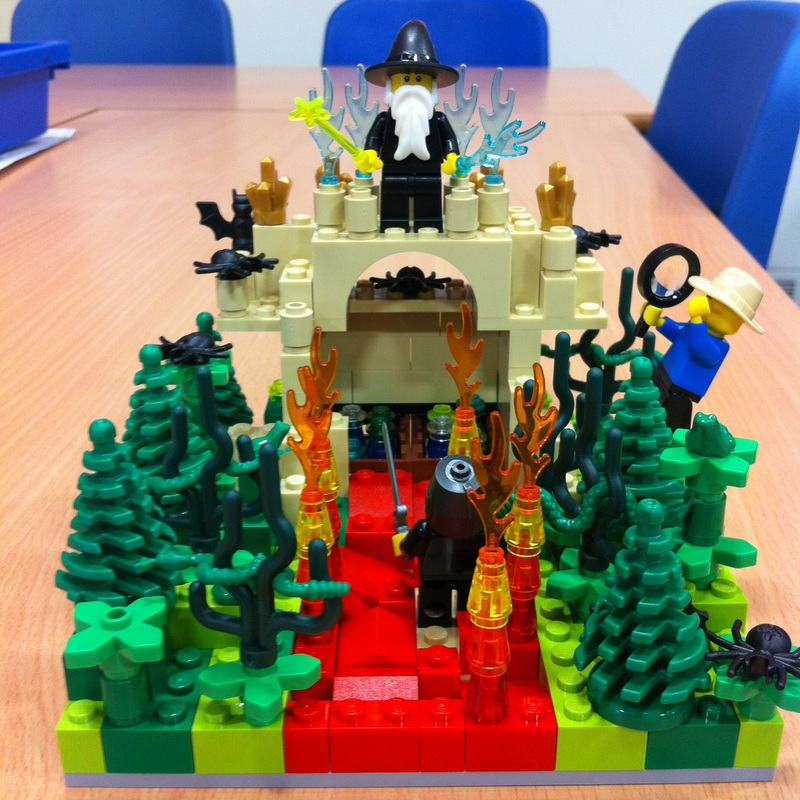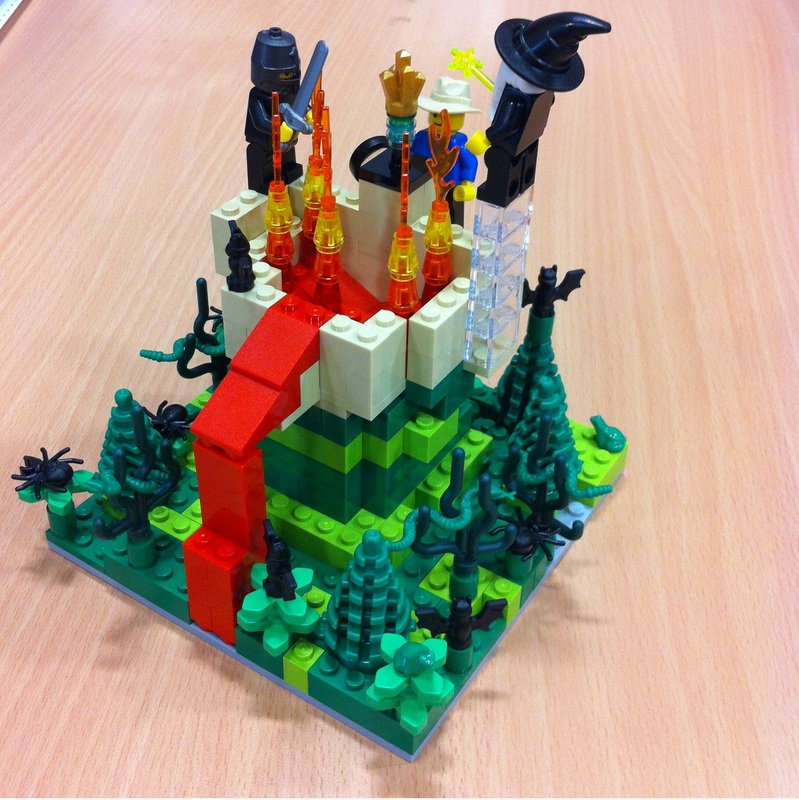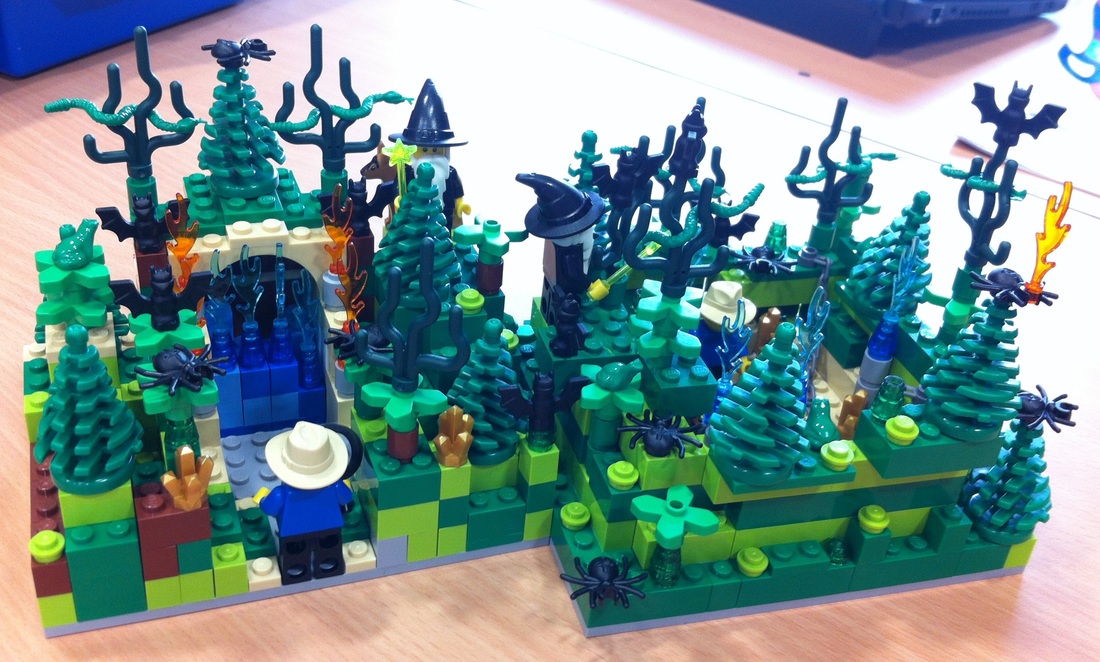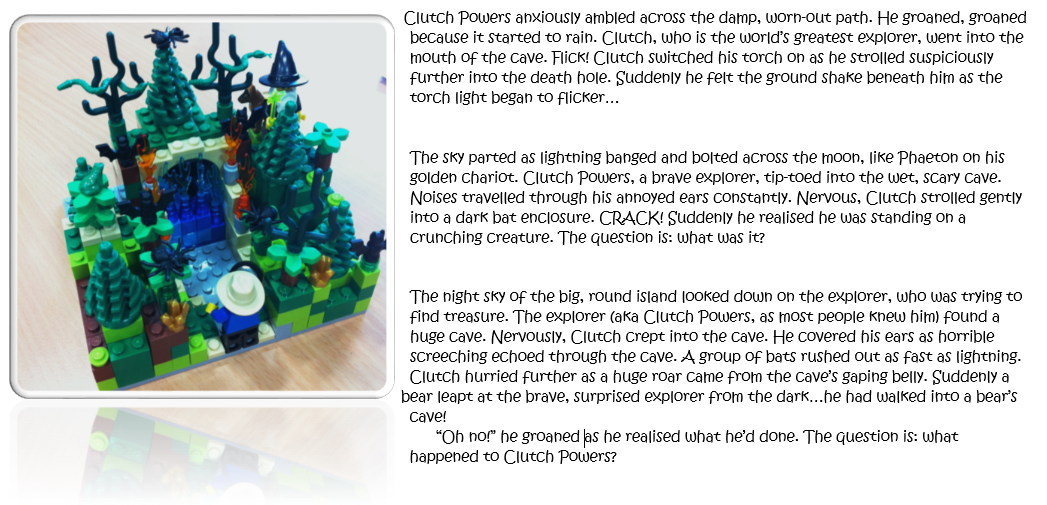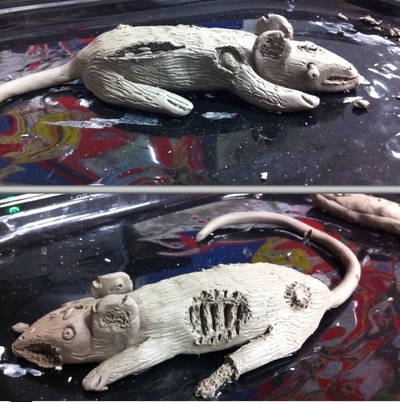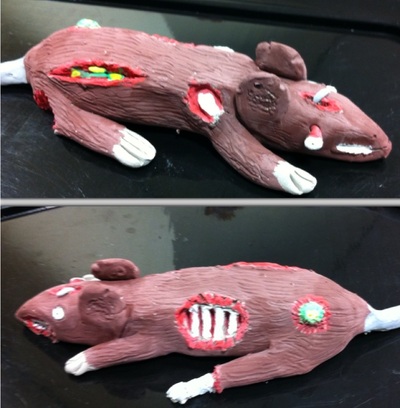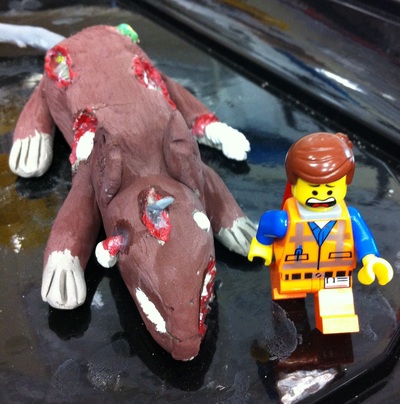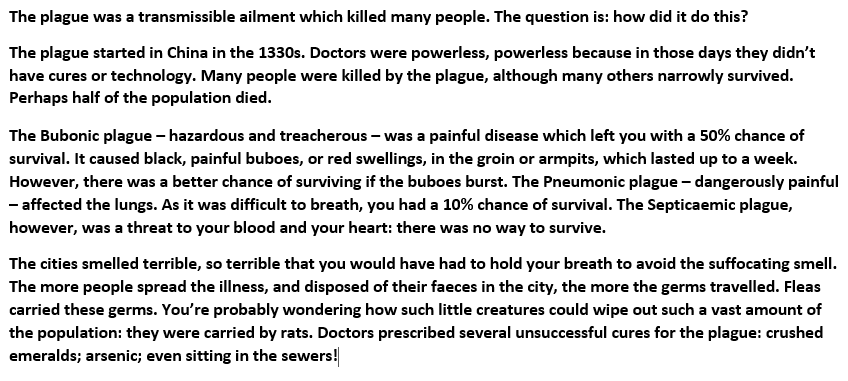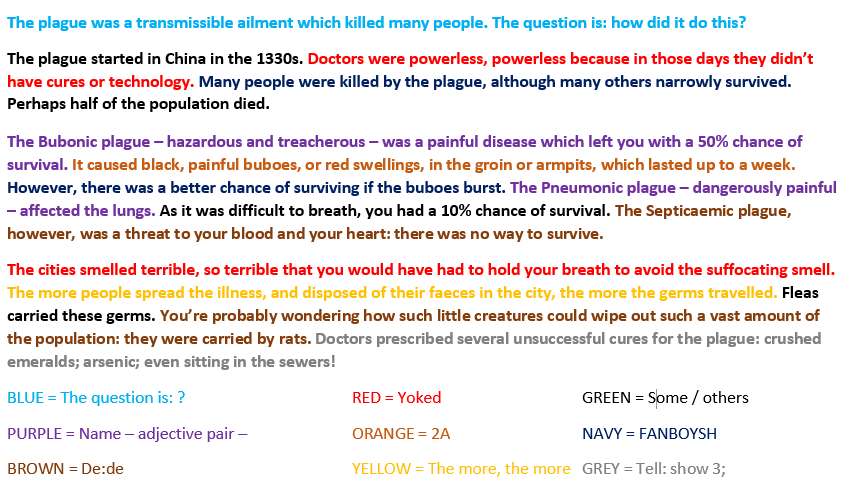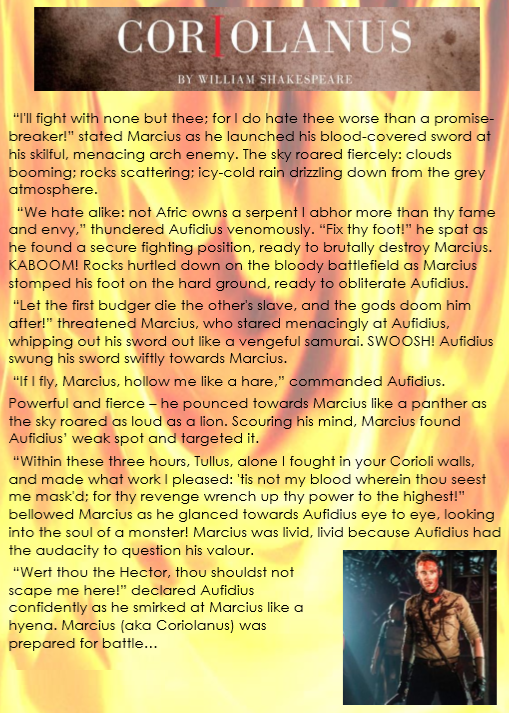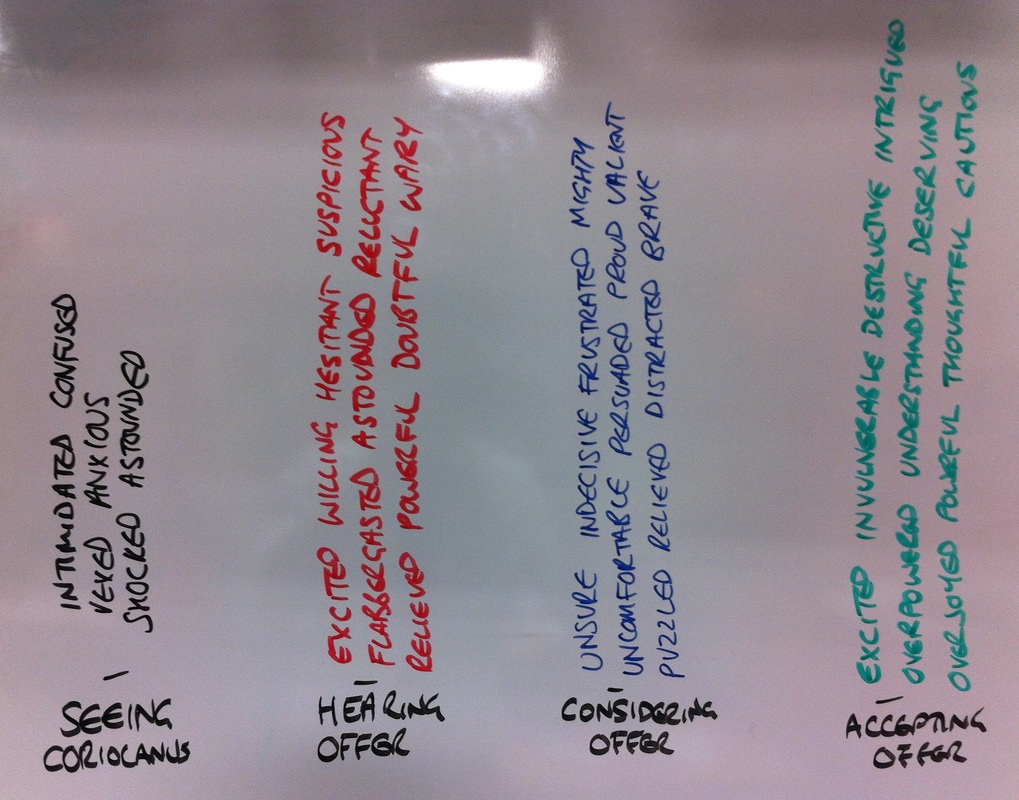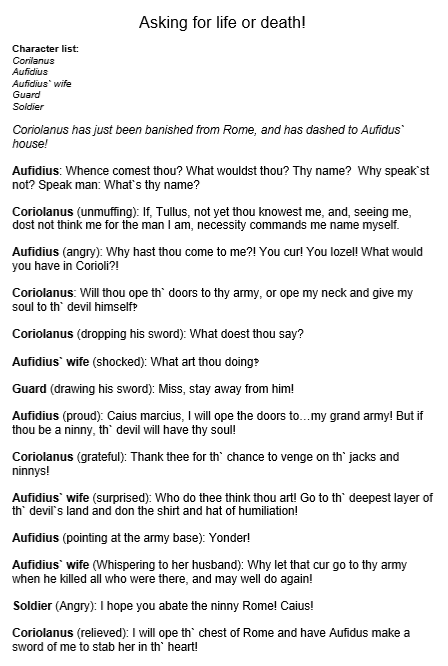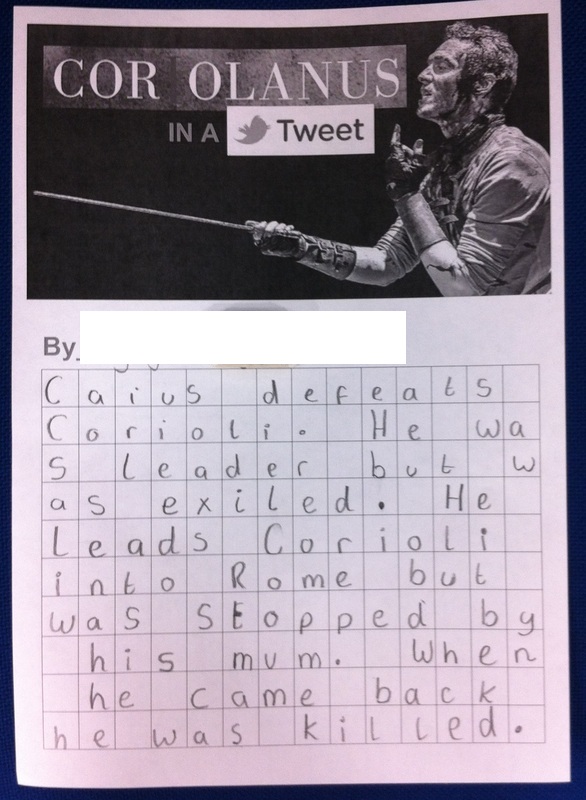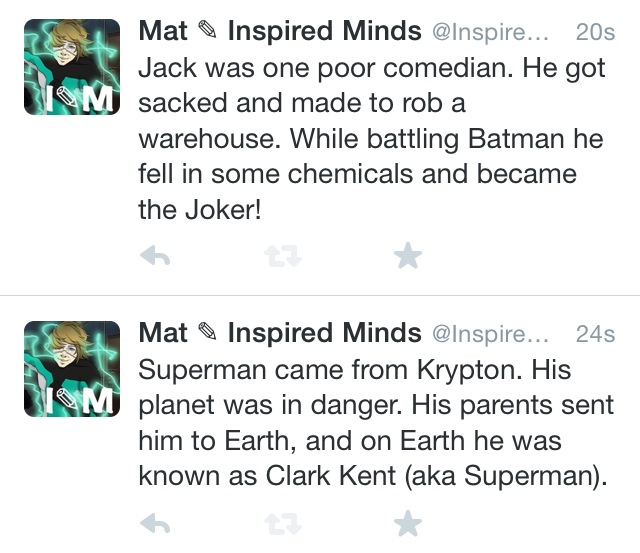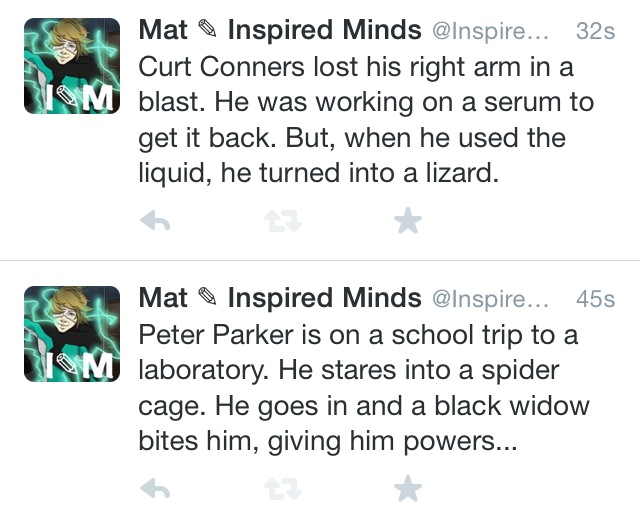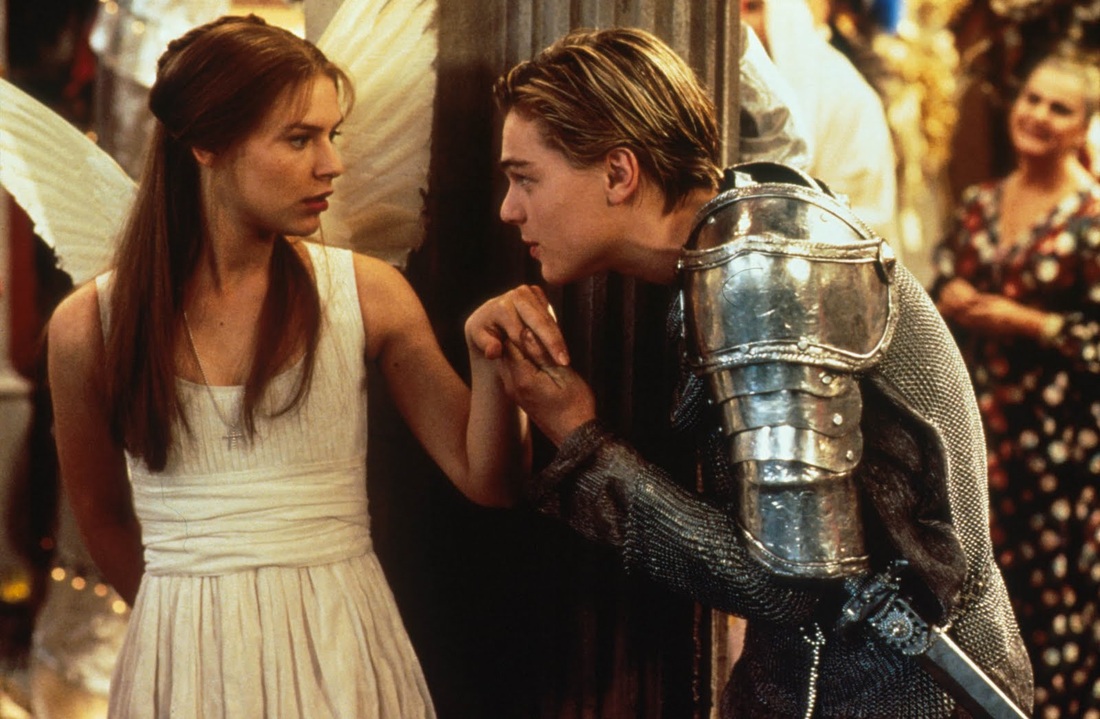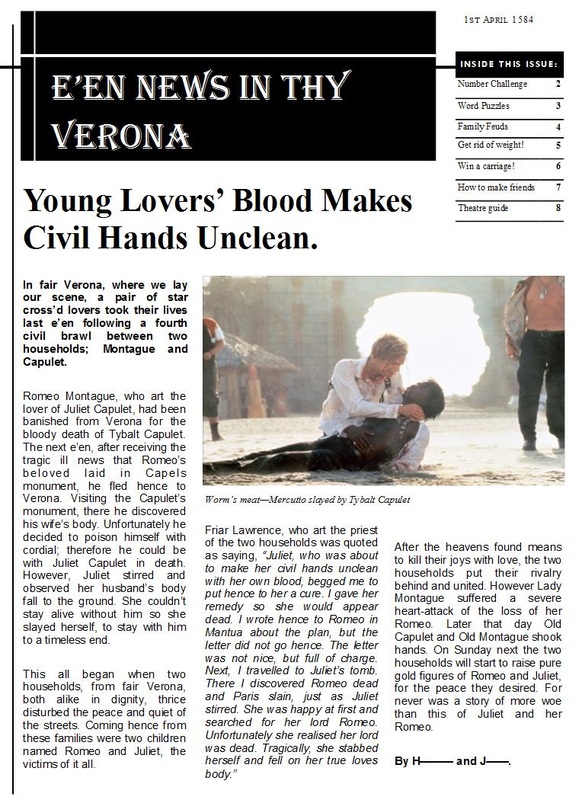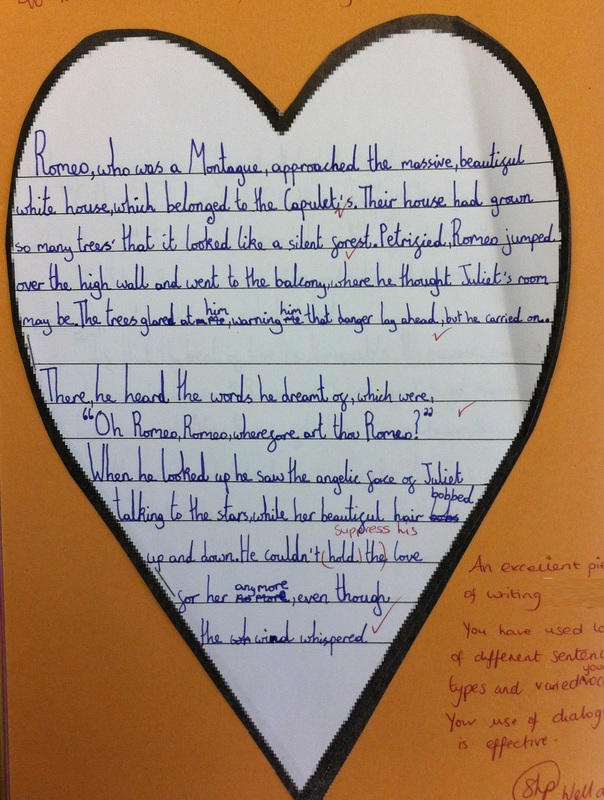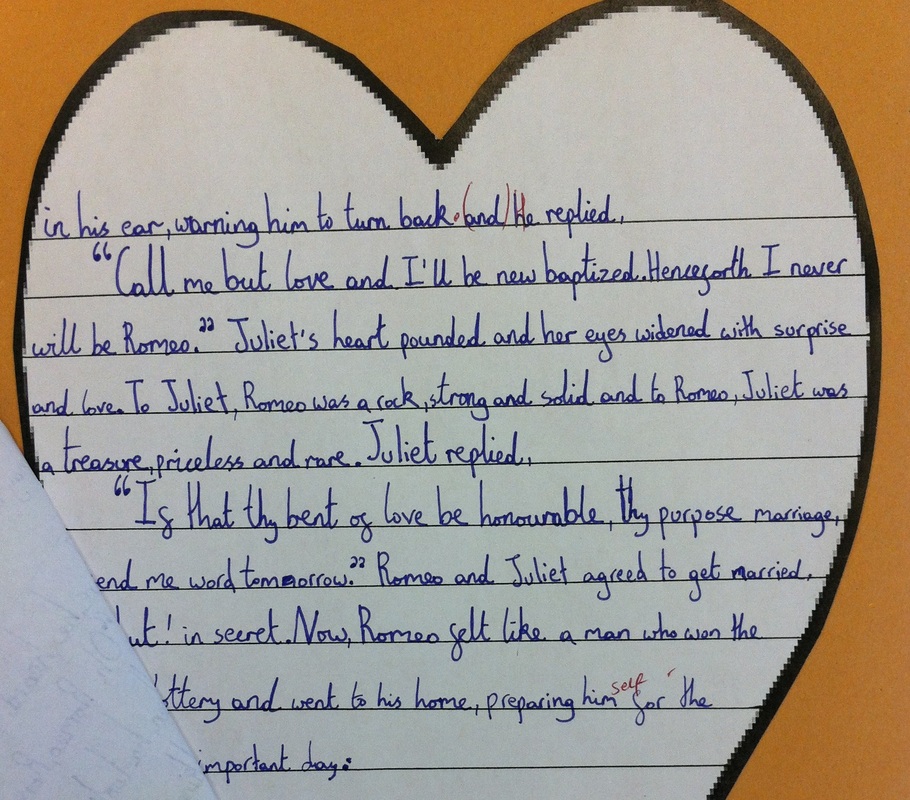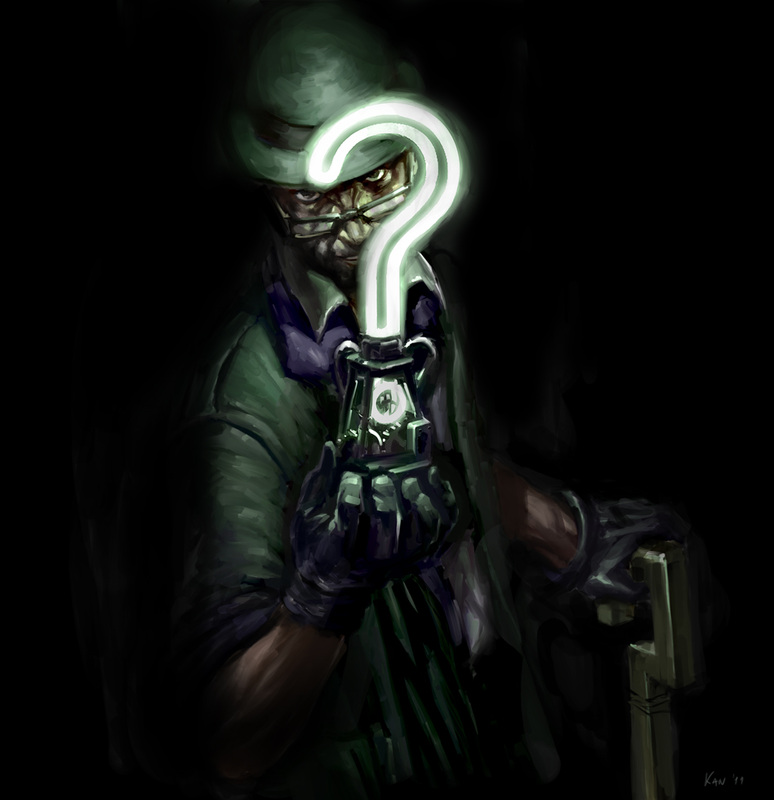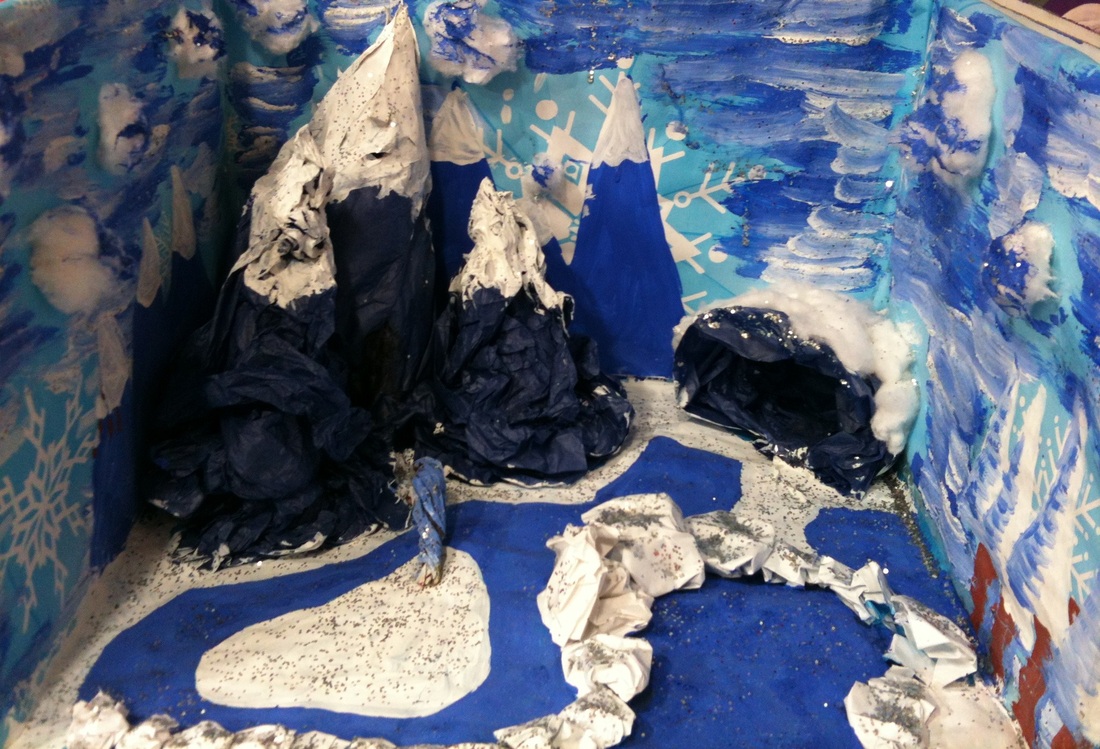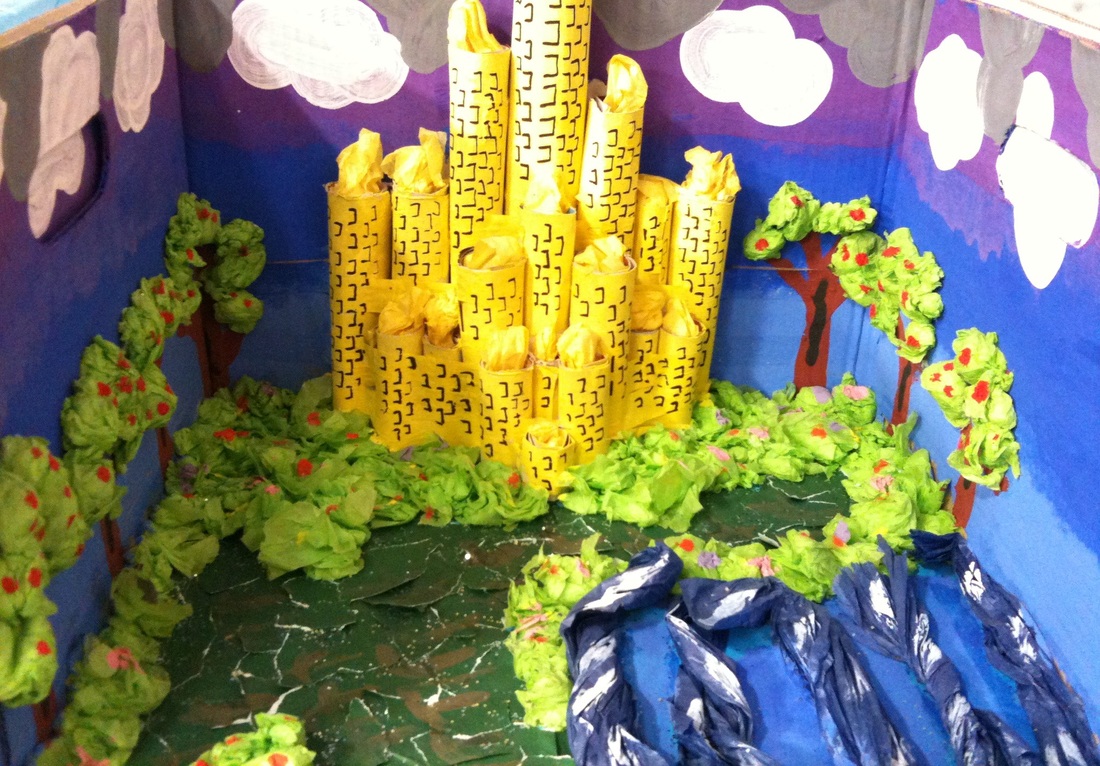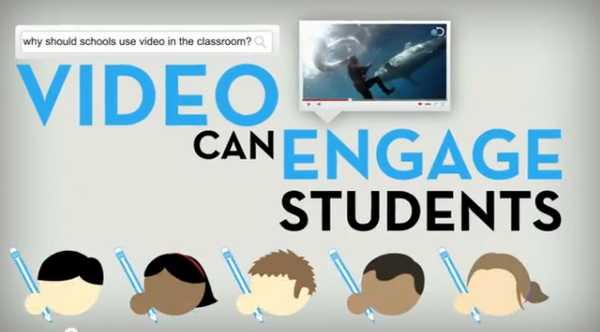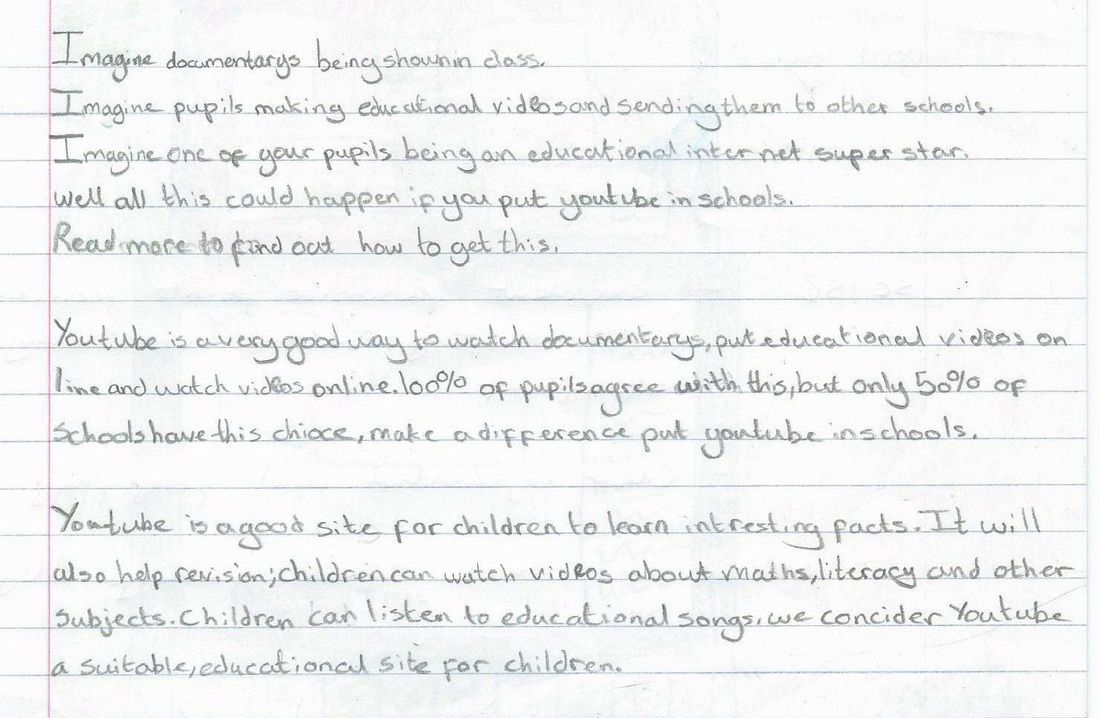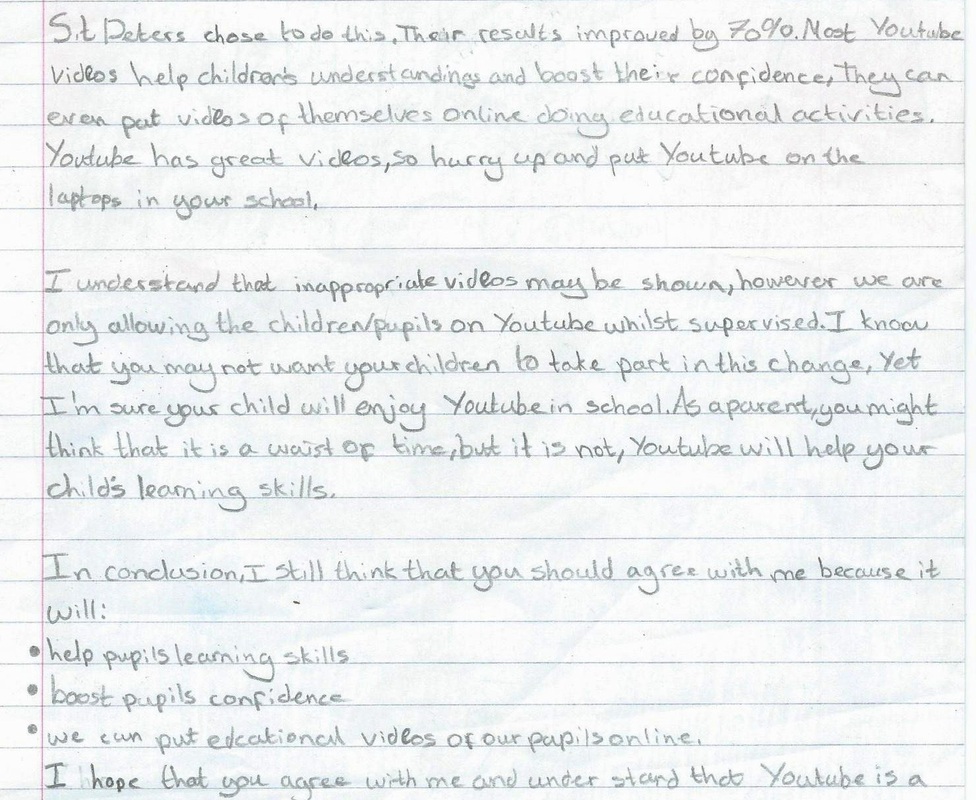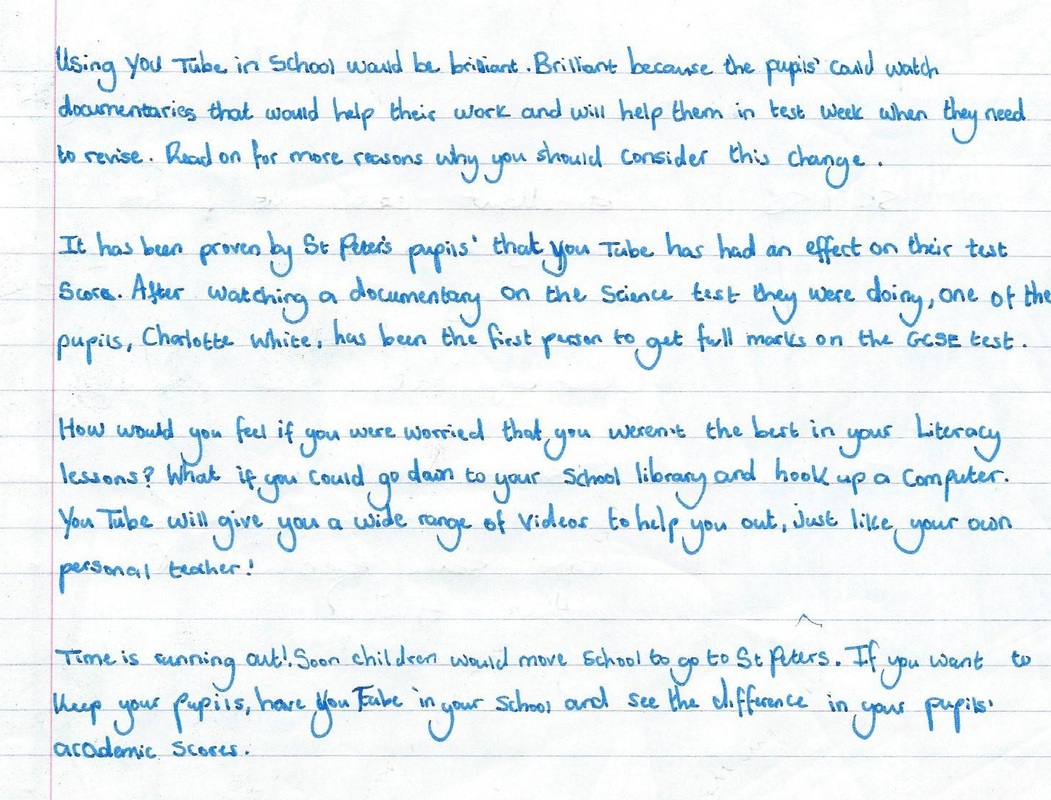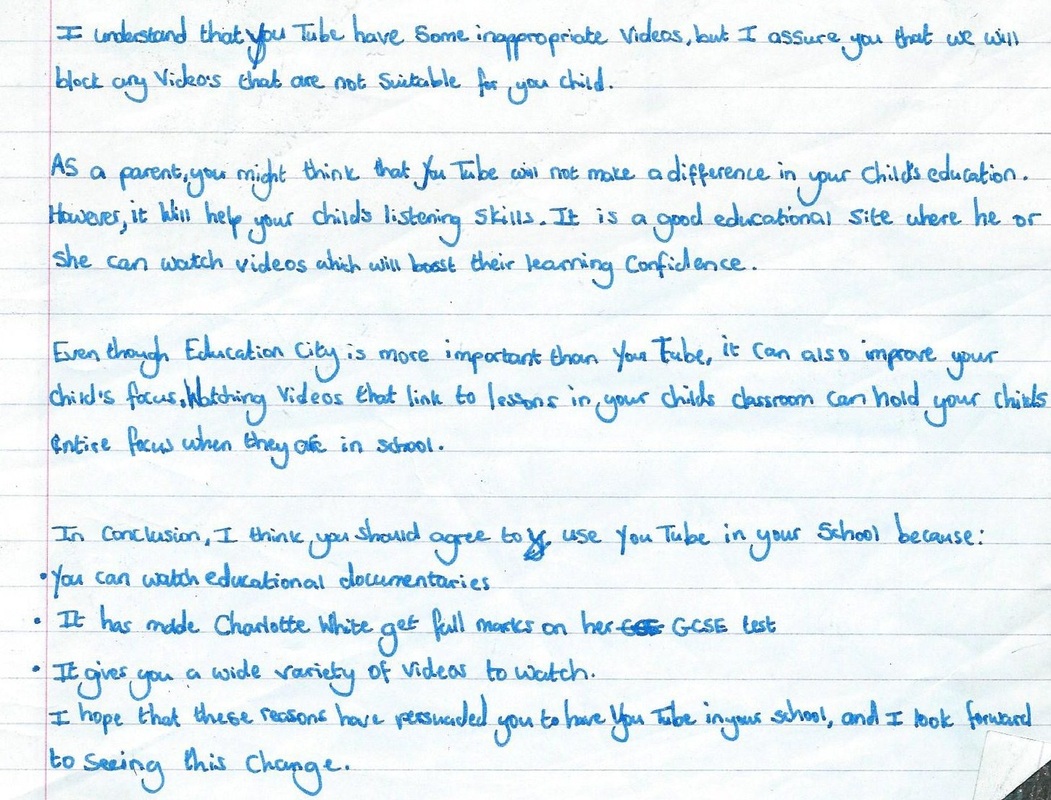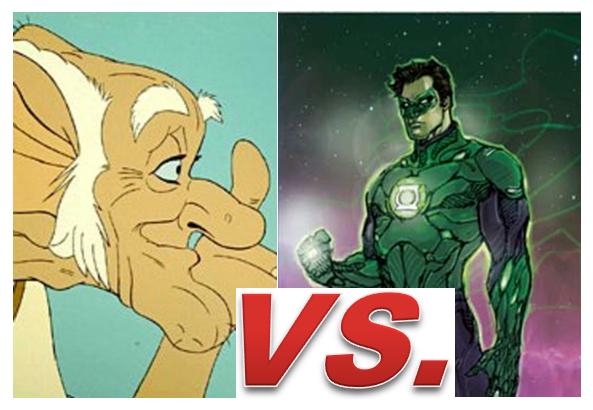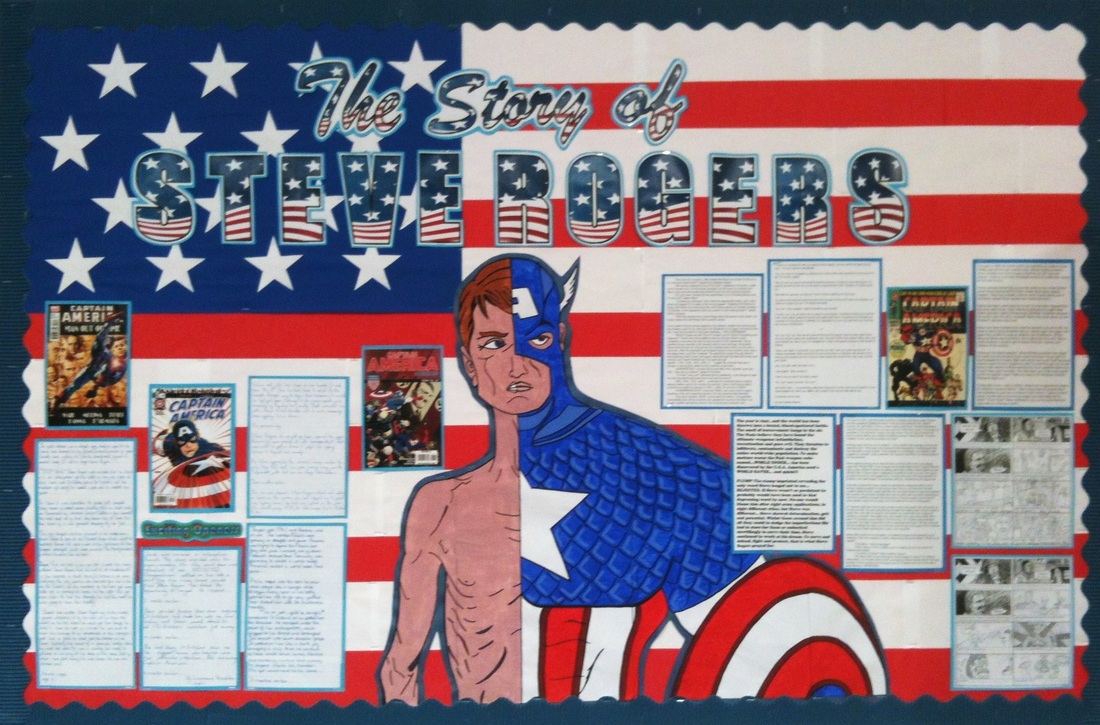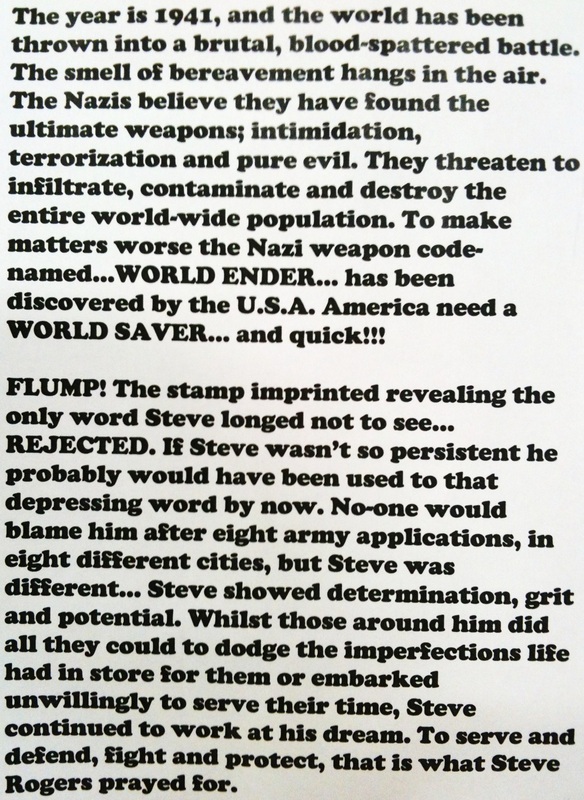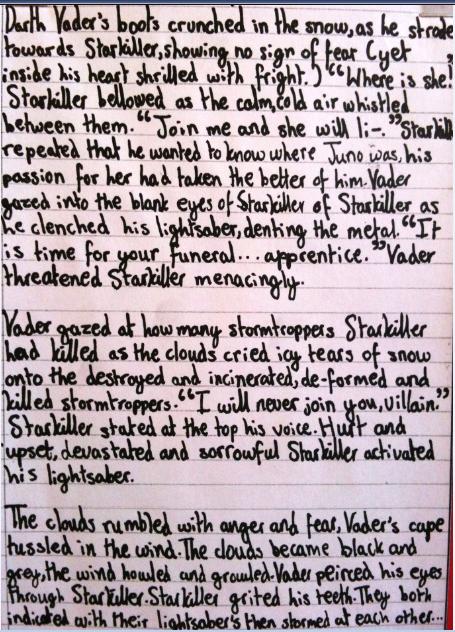Writing instructions with George's Marvellous Medicine and The Ultimate Guide to Non-Fiction Writing!
|
I am a great fan of using fictional stimuli for non-fiction work, but even so, we did not start our instruction writing unit with mad medicine-making. In fact, I challenged pupils to come up with the most mundane task they could think of, then asked them to use the structural model and techniques they would learn to make an engaging set of instructions for the task they chose. After landing on 'making a jam sandwich', pupils learned the structural model for instructions from The Ultimate Guide to Non-Fiction Writing, which would help them with planning, sequencing and content.
We then discussed each aspect of the text, and how we could make it as engaging as possible by using different language techniques. For example, we learned how to |
add alliteration to a 'De: de' sentence to create interesting titles like,
'Delightful Delicacies: How to Make a Delicious Jam Sandwich'
Then, for the 'What you are doing' introductory section, we explored the use of rhetorical questions like, 'Are you feeling peckish?' and 'Do you fancy a tasty treat?' to engage the reader and plant an idea in their minds. We went on to discuss the use of bullet points and amounts for the 'What you need' section, and then we explored how sequential language and imperative verbs should be used in a range of different sentence types for the main body of the instructions.
Finally, we talked about how best to provide the reader with a way of checking the efficacy of their instructions, as well as ways in which they could provide their reader with additional information. After having practised all of these techniques via the jam sandwich task, pupils were challenged to write their own set of instructions for creating a batch of marvellous medicine. Here's a look at how they did, as well as a breakdown of the techniques they used:
'Delightful Delicacies: How to Make a Delicious Jam Sandwich'
Then, for the 'What you are doing' introductory section, we explored the use of rhetorical questions like, 'Are you feeling peckish?' and 'Do you fancy a tasty treat?' to engage the reader and plant an idea in their minds. We went on to discuss the use of bullet points and amounts for the 'What you need' section, and then we explored how sequential language and imperative verbs should be used in a range of different sentence types for the main body of the instructions.
Finally, we talked about how best to provide the reader with a way of checking the efficacy of their instructions, as well as ways in which they could provide their reader with additional information. After having practised all of these techniques via the jam sandwich task, pupils were challenged to write their own set of instructions for creating a batch of marvellous medicine. Here's a look at how they did, as well as a breakdown of the techniques they used:
The ideas, techniques and stimulus for this unit came from the books below - click on the covers to get your own copies!
Writing fractured fairy tales - the adventures of Gertrude in Fairyland!
This week, pupils in Year 3 have been writing fairy tales with a difference! Following the long standing tradition of 'twisting' fairy tales, pupils first thought about the characters and settings they already knew, then they considered ways to modify those ideas for a new story. The most popular idea centred around the Three Little Pigs, and what they might really have been up to when they encountered the hungry wolf!
Once pupils had thought about ways to 'fracture' the fairy tale characters they knew, they needed a special protagonist for their own story. This is where little Gertrude came in...
Once pupils had thought about ways to 'fracture' the fairy tale characters they knew, they needed a special protagonist for their own story. This is where little Gertrude came in...
|
Gertrude is the main protagonist from a new comic series by superstar comic writer Skottie Young, called 'I Hate Fairyland'.
Gertrude has a very good reason to hate Fairyland; after being transported there on a wish, she is trapped in a world of magic and bunnies and talking animals...for almost thirty years! To make matters worse, she doesn't appear to age a day! Before we continue, I must point out that, despite its fluffy appearance, this is NOT a comic to be used in the primary classroom. The PREMISE, however, and the introduction of Gertrude and her situation on pages like the one opposite from issue #1, provided pupils with a very interesting angle for their twisted fairy tale - what if the one person who actually manages to make it to Fairyland, doesn't want to be there at all? And, to make matters worse, what if Fairyland wasn't the magical place that she had been promised by her story books? With this starting point in mind, pupils set off to establish Gertrude's backstory, then use the range of the Exciting Sentences that they knew to write her first (mis)adventure in Fairyland, where she would discover the truth about the Three Little Pigs... |
Here is an example of one of the pupil's finished stories, as well as a breakdown of the sentence types he used:
The Battle for Chalon - An original Year 3 Lego Sci-fi Epic!
Towards the end of the half-term, pupils in Year 3 put the finishing touches to their very own sci-fi Lego animation! Have a look, then read on to find out how they did it!
|
This project started with one little Lego minifigure, and plenty of ideas from a very enthusiastic class! By the end of the first lesson, pupils had given the figure a name, decided where he came from, what he wanted, and how he was going to get it. Pupils then began work on three interlinked projects: a mixed-media story plan; a new collection of Exciting Sentences, and an animation project using the Lego Education Story Starter set! |
Pupils used the story ideas they had come up with, and the models they had built, to inspire work on 'Emotion - consequence', 'Noun, who/which/where,', and 'BOYS' sentences, amongst others! They also combined the Creaza comic creator and the ComicLife app, along with actual Lego minifigures, to create mixed-media comic planners:
Pupils then combined their work on the sentences with their narrative plans to write engaging scripts for the final animation!
Big Hero 6: writing instruction manuals
After using the stimulus of Big Hero 6 to introduce the conventions of instruction writing last week (see the work on Baymax puppets below), pupils were challenged to write their own instruction manuals to accompany a real-life Baymax unit!
Pupils watched a video and worked together to identify six key steps in the operation of a Baymax robot.
Pupils watched a video and worked together to identify six key steps in the operation of a Baymax robot.
Having identified the steps necessary to operate the 'personal healthcare assistant', we reviewed the six key elements of instructional writing based on the approach in the upcoming book 'The Ultimate Guide to Writing Non-Fiction' (by Alan Peat and Mathew Sullivan - available soon). We then worked with drama specialist Peter Kennedy to expand on these steps, while at the same time building confidence in the use of sequential and specialised language.
Peter led a wonderful session that saw pupils use words games to secure key terms, then apply the vocabulary in the creation of 'infomercials' for Baymax. These were fairly general at first, and helped pupils to develop their use of both instructional and persuasive language. They then became more targeted, with groups creating ads for different target audiences, tailoring content and language to suit.
The excitement generated by the Big Hero 6 stimulus was only increased by this fun 'drama-into-writing' session. By the time the final writing task came round, pupils were confident in their knowledge of the structural conventions of instructions, the language features (e.g. use of 'sequential word, (comma)' sentences, imperative verbs, brackets for extra information, direct, personal addresses to the reader, De: de sentences, etc.) and the steps which needed to be covered. All that was left to do was to get writing! Here are written and word-processed examples of the results:
Peter led a wonderful session that saw pupils use words games to secure key terms, then apply the vocabulary in the creation of 'infomercials' for Baymax. These were fairly general at first, and helped pupils to develop their use of both instructional and persuasive language. They then became more targeted, with groups creating ads for different target audiences, tailoring content and language to suit.
The excitement generated by the Big Hero 6 stimulus was only increased by this fun 'drama-into-writing' session. By the time the final writing task came round, pupils were confident in their knowledge of the structural conventions of instructions, the language features (e.g. use of 'sequential word, (comma)' sentences, imperative verbs, brackets for extra information, direct, personal addresses to the reader, De: de sentences, etc.) and the steps which needed to be covered. All that was left to do was to get writing! Here are written and word-processed examples of the results:
Writing instructions with Big Hero 6!
After sharing an introductory video, we set to work figuring out how to assemble a cardboard puppet of Baymax based on this template:
This simple but enjoyable activity would actually form the basis of our first set of instructions. As you can see from the template, the existing directions are sparse, so pupils were challenged to create a more detailed write up which others could follow.
We discussed the six elements of instructional writing, their order, presentation, and how one linked to another. Then we talked about effective sentence types and key vocabulary that would be useful (words and phrases like 'optional' and 'step-by-step', as well as word types such as sequential connectives and imperative verbs). Over the course of the week, pupils built up their first set of instructions. Here is an example of the finished writing by one of our Year 3s:
We discussed the six elements of instructional writing, their order, presentation, and how one linked to another. Then we talked about effective sentence types and key vocabulary that would be useful (words and phrases like 'optional' and 'step-by-step', as well as word types such as sequential connectives and imperative verbs). Over the course of the week, pupils built up their first set of instructions. Here is an example of the finished writing by one of our Year 3s:
Next week, pupils will be asked to write a set of instructions that could form the operation manual for a real Baymax robot! For now, we would be delighted if any classes would try out our instructions and let us know what they think! You can download a PDF version of the instructions here.
Every day is Thorsday! Viking myths in Year 3
|
This half term we have been looking at Myths and Legends in Literacy, specifically Norse mythology, including the stories of the gods.
With Thor, the God of Thunder, being one of Marvel Comics' latest movie stars, what better way to introduce this unit than with a few carefully selected scenes from his film? After having watched his almost-coronation, and his brief journey into the wastelands of Jotunheim, we studied the very heated conversation he has with Odin upon his return to Asgard. |
|
Pupils used the 'role on the wall' drama activity to compare these two powerful characters, then produced scripts for paired dramas based on their findings. This new speech was put into the ComicLife app to create a dialogue storyboard, which pupils used to inspire their writing:
We also used this opportunity to explore a couple of new Exciting Sentences. The first was the 'Emotion - consequence' sentence:
As we started to focus more on setting descriptions, the 'Position + place, subject + action' sentence allowed us to link characters with their locations:
As we began to focus more on Jotunheim, the location of Thor's first skirmish, we introduced the technique of 'Pathetic Fallacy'. This is a type of personification where inanimate objects take on human traits and abilities, particularly those which mirror or respond to the emotions of the characters:
Pupils used the Position + place, subject + action sentence to start their own personification descriptions. Here are a few examples:
After having practised these language features, pupils worked as a class to plan their very own Viking myth. Once they had come up with a story outline, pupils worked together to generate 8 planning points, which were then entered into comic planners to create writing resources:
With these planners as a reference, and with their scenes recreated in Lego form for extra excitement, pupils produced some fantastic writing:
Le Royaume 2:
|
|
Having built on the dialogue and description work completed so far this half term (see the previous post), pupils were challenged this week to plan and write their own follow up fables based on the story of 'Le Royaume'.
As a class, the pupils came up with a premise for a story which would expand on the existing narrative and give a twist to the ending. Once they had worked this out into eight planning points, the 8 frame comic planners were completed:
As a class, the pupils came up with a premise for a story which would expand on the existing narrative and give a twist to the ending. Once they had worked this out into eight planning points, the 8 frame comic planners were completed:
The planners proved as invaluable-a-writing resource as ever; pupils were constantly referring back to the page to check the order of events, the content of each section, the order of the narrative and even which sections to combine into linked paragraphs. They also included the dialogue and the 'show not tell' techniques we had worked on in the previous weeks, and the Exciting Sentences were of course out in force!
Here are the results:
Here are the results:
Having completed the written work, it was time to make our own animated film! We used our maths skills to make cube nets, which we painted to look like bricks. These would be the building blocks for our castle. Pupils used the 'I Can Animate' app on the iPads to film the action from their written stories in stop-motion, then used 'iMovie' to edit and add their dramatic vocal performances! We hope you enjoy the result!
Writing dialogue through comics and 'The Kingdom'
After the success of the Lego sequel project (see below) we moved on to looking at fables in Year 3, which gave me the perfect excuse to pull out one of my favourite mini-movies, 'Le Royaume':
This short film is useful for so many reasons. It is a great example of a fable, with many moral lessons included throughout, as well as featuring a great anthropomorphic character in the beaver. But what I find perhaps most useful about this film is its lack of dialogue. This facilitates great inference-based discussions, all throughout the film, about what a character MIGHT say. Pupils have to find clues in the action, body language, interactions, expressions, and even the tone of the film. Using the Comic Life app on the iPad and stills from the film, I created a comic version of the start of the story, including blank speech bubbles. I then challenged pupils to infer the speech from what they had seen:
Not only was this a useful inference-making activity, it also allowed us to start talking as a class about the conventions of written speech. It was so easy to demonstrate how the inverted commas went around only what was in the speech bubbles, (including the final punctuation!). It was also a great opportunity to introduce a new punctuation mark, the Interrobang, in the context in which it is most appropriate. Pupils used the completed comic as a prompt to write their own dialogue sequences. In this way we were able to include other writing targets, such as naming speakers, using different speaking verbs, and adding an action for each speaker using 'as adverbials':
In the next session, pupils were presented with a new comic with blank speech bubbles:
This time, pupils inferred their own speech, and we began to discuss ways to make the surrounding detail more interesting. This included a discussion about pathetic fallacy, and how the weather in the story, and particularly the wind, seemed to be just as much an integral 'character' as the king or the beaver. Here's an example of what these discussion led to:
You can see how, with clear rules and a clear visual prompt in place, pupils feel much more confident to focus on the extra elements that really lift the writing. After the holidays, we will embark on a cross-curricular literacy, computing, D&T and numeracy project to build a set, write the next part of the tale, and animate it to create our own version of The Kingdom! As you can see, work is already underway!
Pupils write their own sequel to The Lego Movie... with added zombies!
During the past few weeks in Year 3 we have been introducing a range of new Exciting Sentences via the stimulus of The Lego Movie, with some excellent results:
With our sentence toolbox filling up, we used our 8-frame comic planners to plot out a suitably exciting sequel to the The Lego Movie. The class came up with the idea to base their stories on Badcop's revenge, and even threw a Lego zombie army into the story for good measure!
Then, with our comic plans completed and at the ready, we embarked on the first draft of the first half of our sequel. Have a look and see what you think!
We then took the entire comic plan and used it to inform the rest of our writing. Here's an example of a plan, split into its four sections:
INTRODUCTION - Characters and settings introduced
PROBLEM - The dilemma is presented here
MOST EXCITING - The action comes to a climax
RESOLUTION - The narrative is brought to a close with the consequences of the characters' actions and choices
...and here is an example of the finished writing!
A cross-curricular superhero story written in Exciting Sentences!
Today we put the finishing touches on a class maths mystery story based on Captain Atomic, a character from the brilliant Atomic! series by Guy Bass.
It was a great way of challenging Year 3s to take the Exciting Sentences we had introduced so far and apply them as a group to create a coherent narrative.
It was also useful to demonstrate to young writers that quantity does not always equal quality. They were amazed that they could tell a gripping story in only five sentences!
Just in case the sentences are a bit small to read, here they are in full, along with the names of the Exciting Sentences used:
Captain Atomic, who is a titanic, powerful superhero, discovered that the villainous, despicable FlatFace had stolen and stashed all the zeroes in the world.
(Noun, who/which/where, + 4A)
Captain Atomic travelled to the dangerous Amazon rainforest: he had to solve a number sequence to unlock an ancient cave and release the stolen zeroes.
(De:de)
Next, Captain Atomic swam like a fearsome tiger shark, following coordinates on a map to locate and investigate an underwater stash of zeroes.
(Simile)
Captain Atomic used his powerful, fiery jet pack so that he could rescue the remaining stolen zeroes from FlatFace's lair.
(BOYS)
Captain Atomic, who rescued the terrified zeroes, arrested the detestable, malevolent FlatFace and threw him in a prison of lava.
(Noun, who/which/where, + 2A)
It was a great way of challenging Year 3s to take the Exciting Sentences we had introduced so far and apply them as a group to create a coherent narrative.
It was also useful to demonstrate to young writers that quantity does not always equal quality. They were amazed that they could tell a gripping story in only five sentences!
Just in case the sentences are a bit small to read, here they are in full, along with the names of the Exciting Sentences used:
Captain Atomic, who is a titanic, powerful superhero, discovered that the villainous, despicable FlatFace had stolen and stashed all the zeroes in the world.
(Noun, who/which/where, + 4A)
Captain Atomic travelled to the dangerous Amazon rainforest: he had to solve a number sequence to unlock an ancient cave and release the stolen zeroes.
(De:de)
Next, Captain Atomic swam like a fearsome tiger shark, following coordinates on a map to locate and investigate an underwater stash of zeroes.
(Simile)
Captain Atomic used his powerful, fiery jet pack so that he could rescue the remaining stolen zeroes from FlatFace's lair.
(BOYS)
Captain Atomic, who rescued the terrified zeroes, arrested the detestable, malevolent FlatFace and threw him in a prison of lava.
(Noun, who/which/where, + 2A)
|
Last week we were visited by our very favourite author– the one and only Guy Bass! He came to tell us about his hilarious new book, The Legend of Frog. He also shared some fashionably questionable pictures from his childhood and told us all about the biggest and best fibs that parents tell their kids!
|
After Guy’s visit we sped through the final Stitch Head book, The Spider’s Lair, making it four out of four read in total this year (as well as five other class readers!)
Once finished, we set to work on an art piece, inspired by the atmospheric art of Stitch Head illustrator Pete Williamson. First came some silhouette and chalk work to create gloomy, shadowy, yet luminous backgrounds...
Then it was on to creations for the middle distance – the madder the better – Professor Erasmus would be proud! Finally we added the masks we had been working on to bring the star of the show right to the fore:
At lunchtime we kept the Lego out, with the challenge of building a scene from our favourite Shakespeare play, ‘Coriolanus’. We decided to attempt the attack on Rome, led by the vengeful Coriolanus:
You can still order your own Lego StoryStarter sample kit here. Get building and get writing!
Our Lego StoryStarter saga comes to and end...or does it?
Throughout the work we have been doing using the Lego StoryStarter kit, we have focused on creating mood and tension. At this point, things were as tense as they could get: Thaddion had attacked Clutch for disturbing his trap and the Dark Knight had appeared to intervene. How would it all end? After more Master Builder brick action, here's how some of our writers saw the saga unfold...
You can still order your own Lego StoryStarter sample kit here. Get building and get writing!
Our Lego adventure continues...
So, we had our hero, our villain, and our intrepid explorer. Now it was time to build the next phase of the story. Now it was time to find out what happened when the vengeful Wizard Thaddion and the valiant Dark Knight finally met...
Models made, we set about doing them justice, aiming to create a tense description which included action and locational details. Have a look at the results:
Who knows what amazing adventures our constructions will go on next!
What happens when you let Master Builders loose with Lego StoryStarter? This...
This week we decided to show what could really be done with Lego Education's StoryStarter pack. At the start of the building phase, the pupils' only instruction was to build a scene with tension. They then worked in two groups, one deciding that they would build a scary forest which led to an intimidating cave, and the other deciding to take a look inside that same cave from above.
During the actual lesson we focused on skills that would be useful for creating tension, such as the use of onomatopoeic words (included via the 'Sound! Cause' Exciting Sentence) as well as use of ellipsis ('Trailing off' sentences) and mysterious rhetorical questions for cliff-hangers ('The question is:? sentences). We also decided that the explorer would be Clutch Powers, a character who proved popular with the class after watching his Lego film.
Here, along with the models that inspired them, are the un-scaffolded, independent results of the lesson from some Master Builders and Master Writers!
During the actual lesson we focused on skills that would be useful for creating tension, such as the use of onomatopoeic words (included via the 'Sound! Cause' Exciting Sentence) as well as use of ellipsis ('Trailing off' sentences) and mysterious rhetorical questions for cliff-hangers ('The question is:? sentences). We also decided that the explorer would be Clutch Powers, a character who proved popular with the class after watching his Lego film.
Here, along with the models that inspired them, are the un-scaffolded, independent results of the lesson from some Master Builders and Master Writers!
You can order a FREE sample Lego StoryStarter pack here. Get building and get writing!
Exciting Sentences...and Bob the plague rat
The Exciting Sentences are fantastic for story writing, yet they are just as much at home when applied to non-fiction work. (That was a BOYS sentence!) This week, we have been putting the sentences to good use as they write reports on the Black Death. It is a topic that has captured their imagination and sparked much enthusiasm, mostly due to its gruesome nature! So, what better way to exploit that in a cross-curricular manner than to first make our own rotting plague rat models! Meet the modelled example, affectionately named 'Bob':
We have all made their own plague rat remains, which will eventually be displayed strewn throughout the vaults of the Houses of Parliament. Pupils have been soaking up plague facts, and today wrote short reports on the subject which demonstrate the effectiveness of the Exciting Sentences in report writing. Here is a sample of what they did:
...and here is the same text with a colour-coded guide to the sentence types used:
Stay tuned for the unveiling of the plague display - Bob's friends are looking forward to meeting you!
The Coriolanus Project
Mid-way through this half term our whole school embarked on Shakespeare week - five days dedicated to the Bard!
Throughout the school, many different plays inspired exciting projects and excellent writing. Macbeth, A Midsummer Night's Dream, Hamlet, and Romeo and Juliet all featured. But in Class 10, we decided to take on one of Shakespeare's lesser-known plays, 'Coriolanus'. The pupils were particularly inspired by the recent Donmar Warehouse production, starring Loki himself, Tom Hiddleston:
Throughout the school, many different plays inspired exciting projects and excellent writing. Macbeth, A Midsummer Night's Dream, Hamlet, and Romeo and Juliet all featured. But in Class 10, we decided to take on one of Shakespeare's lesser-known plays, 'Coriolanus'. The pupils were particularly inspired by the recent Donmar Warehouse production, starring Loki himself, Tom Hiddleston:
First, we focused on the character of Caius Marcius, and examined the speech he gives when he first appears to the Roman crowd who he detests so much:
He that will give good words to thee will flatter
Beneath abhorring. What would you have, you curs,
That like nor peace nor war? the one affrights you,
The other makes you proud. He that trusts to you,
Where he should find you lions, finds you hares;
Where foxes, geese: you are no surer, no,
Than is the coal of fire upon the ice,
Or hailstone in the sun. Your virtue is
To make him worthy whose offence subdues him
And curse that justice did it.
Who deserves greatness
Deserves your hate; and your affections are
A sick man's appetite, who desires most that
Which would increase his evil. He that depends
Upon your favours swims with fins of lead
And hews down oaks with rushes. Hang ye! Trust Ye?
With every minute you do change a mind,
And call him noble that was now your hate,
Him vile that was your garland. What's the matter,
That in these several places of the city
You cry against the noble senate, who,
Under the gods, keep you in awe, which else
Would feed on one another?
Line by line the pupils worked out exactly what Shakespeare was saying, and, once they understood, used this to deliver the speech themselves, in true Coriolanus style:
He that will give good words to thee will flatter
Beneath abhorring. What would you have, you curs,
That like nor peace nor war? the one affrights you,
The other makes you proud. He that trusts to you,
Where he should find you lions, finds you hares;
Where foxes, geese: you are no surer, no,
Than is the coal of fire upon the ice,
Or hailstone in the sun. Your virtue is
To make him worthy whose offence subdues him
And curse that justice did it.
Who deserves greatness
Deserves your hate; and your affections are
A sick man's appetite, who desires most that
Which would increase his evil. He that depends
Upon your favours swims with fins of lead
And hews down oaks with rushes. Hang ye! Trust Ye?
With every minute you do change a mind,
And call him noble that was now your hate,
Him vile that was your garland. What's the matter,
That in these several places of the city
You cry against the noble senate, who,
Under the gods, keep you in awe, which else
Would feed on one another?
Line by line the pupils worked out exactly what Shakespeare was saying, and, once they understood, used this to deliver the speech themselves, in true Coriolanus style:
Watching and enjoying more and more of the performance, we arrived at the scene where Marcius meets his arch enemy, Tullus Aufidius, ironically the man of whom he speaks most highly. Fascinating discussions regarding the character of Marcius took place as we examined the following exchange between the two men:
SCENE VIII. A field of battle.
Alarum as in battle. Enter, from opposite sides, MARCIUS and AUFIDIUS
MARCIUS
I'll fight with none but thee; for I do hate thee
Worse than a promise-breaker.
AUFIDIUS
We hate alike:
Not Afric owns a serpent I abhor
More than thy fame and envy. Fix thy foot.
MARCIUS
Let the first budger die the other's slave,
And the gods doom him after!
AUFIDIUS
If I fly, Marcius,
Holloa me like a hare.
MARCIUS
Within these three hours, Tullus,
Alone I fought in your Corioli walls,
And made what work I pleased: 'tis not my blood
Wherein thou seest me mask'd; for thy revenge
Wrench up thy power to the highest.
AUFIDIUS
Wert thou the Hector,
Thou shouldst not scape me here.
Using this short scene, and combining it with techniques from the Exciting Sentences approach, pupils expanded the dialogue into a short narrative:
SCENE VIII. A field of battle.
Alarum as in battle. Enter, from opposite sides, MARCIUS and AUFIDIUS
MARCIUS
I'll fight with none but thee; for I do hate thee
Worse than a promise-breaker.
AUFIDIUS
We hate alike:
Not Afric owns a serpent I abhor
More than thy fame and envy. Fix thy foot.
MARCIUS
Let the first budger die the other's slave,
And the gods doom him after!
AUFIDIUS
If I fly, Marcius,
Holloa me like a hare.
MARCIUS
Within these three hours, Tullus,
Alone I fought in your Corioli walls,
And made what work I pleased: 'tis not my blood
Wherein thou seest me mask'd; for thy revenge
Wrench up thy power to the highest.
AUFIDIUS
Wert thou the Hector,
Thou shouldst not scape me here.
Using this short scene, and combining it with techniques from the Exciting Sentences approach, pupils expanded the dialogue into a short narrative:
Reading on and watching more, we stopped short of the scene where Coriolanus asks Aufidius if he can lead the Corioli forces against Rome. We imagined how the scene might play out, based on what we knew about the characters, and even tracked Aufidius' potential emotions:
After having looked at the conventions of a script, and still without looking at the actual scene, it was time for the pupils to take on the role of Shakespeare and write their own continuation of the play!
As a final challenge, we used a technique from Mr Parkinson based on constrained writing, where each pupil was provided with a grid of 140 squares, and challenged to write the story of Coriolanus in exactly 140 characters!
Some pupils were so enthused by this that they spent lunchtime that day coming up with 140 character stories for some of their favorite comic characters!
Pupils in Class 10 have loved this project, and their enthusiasm for Shakespeare's work continues to grow. It just goes to show, whether it's comics or Coriolanus, if the stimulus is exciting, the writing will be too!
So...I built a Batcave in my classroom!
This year, reading enthusiasm is high on the school agenda, and as such all teachers were asked to liven up their class libraries and make them into places that would inspire excitement for reading. Finally, the opportunity to build a real Batcave! With a tremendously talented TA on board, the work began...
Shakespeare + Exciting Sentences = even more fantastic writing!
Towards the end of last year, inspired by preparations for an upcoming school production of Romeo and Juliet with the Shakespeare Schools Festival, I challenged pupils to use vocabulary and phrases from the script in a newspaper report on the Capulet/Montague feud:
This year, the cast have become Year 6s, and thanks to their very talented new teachers, their enthusiasm for Shakespearean language hasn't waned a bit. One teacher asked pupils to re-write the balcony scene, using a mix of the original dialogue and contemporary descriptions. The following example shows how skills taught through comics (Similes/Personification/Metaphors etc) and the Exciting Sentences have been developed, harnessed and combined with a Shakespearean stimulus to create a moving, evocative piece of writing:
Comics + Exciting Sentences = a winning formula for outstanding writing!
This year I have the pleasure of taking a team of eight writers to visit the prestigious Cheadle Hulme School:
The goal was to complete a collaborative writing project based on the story of the Joker. The first session went tremendously well and pupils from both schools worked fantastically. The resulting work was excellent, as you can see from the following example:
The Rise of the Joker
Suddenly, from the violent, bubbling vat of toxic waste, a gaunt, cadaverous hand broke the surface of the mixture. Scarred and tattered, bruised and burnt, the body slid onto the hard, metallic floor and landed with a thump. All of a sudden, the deformed body began to twitch…
One day earlier…
Jack Napier, who was the least funny comedian in the world, had just lost his job: he had been booed and taunted off the stage and forced to leave the club. As he sauntered home by himself, the faint splashes of the rain and the icy cold whispering of the wind were his only comfort: its soft hands wrapped around him like a blanket.
Jack lived in a forgotten building on the outskirts of Gotham City. He stayed in an old, dusty one-bedroom apartment on the fourth floor. Jack lived with his pretty and charming wife; he loved her dearly. As he watched her cook another dinner with only three vegetables and some oil, he finally realised that it was time to do something to help her have a better life. But how? The more he thought about it, the more helpless the situation seemed. That was until…
“Yo Napier! Is that you?” a hoarse voice spoke out from the darkness.
“What? Who…who is it?” Jack stammered hesitantly as he turned around to be confronted by five bulky, tall figures who towered over him. The figures loomed ominously out of the darkness and finally met Jack face to face. At last Jack realised who they were. They were the Red Hood Gang!
“Thought it was you Jack!” smirked the leader of the gang, who was called Jason, with a foreboding tone as he threw a heavy arm around Jack, making him feel like an ant.
“How are you Jason?” Jack asked calmly, trying to put on his most gallant face, (however inside he was a terrified mouse).
“Well, you know, I’m alright,” explained Jason, who now had a menacing look on his face. “Actually, I was wondering, how are you feeling? You look a bit under the weather.” Jack frowned at this question and looked down disappointingly at the hard, bumpy ground under him. He began to scuff his shoes.
“Alright! I’ve got an offer for you,” Jason stated as he saw the miserable look on Jack’s face.
“W…what?” mumbled Jack reluctantly.
“A job, tomorrow night at the warehouse. Our other lookout had an, err…unfortunate accident, and guess what! We need a replacement, and I’m sure you would be perfect.” grinned Jason awkwardly.
“But how will it help me?” questioned Jack.
“I’ll give you a fifth of whatever we take,” growled Jason at the thought of having to give away money.
“OK then, it’s a deal,” agreed Jack. “I’ll meet you tomorrow at midnight at the warehouse?”
“Course you’ll do it!” exclaimed Jason. “Meet us at the Acme Chemical Factory, don’t be late!” The gang began to strut away when…
“Wait!” shouted Jack. “What happens if we get caught?”
Jason pivoted round on his right foot and glared angrily at Jack. “We never get caught,” grumbled Jason, squinting at Jack.
The gang turned back and casually began to strut away, leaving Jack standing alone in the darkness of the night, the wind howling around him.
To be continued...
The Rise of the Joker
Suddenly, from the violent, bubbling vat of toxic waste, a gaunt, cadaverous hand broke the surface of the mixture. Scarred and tattered, bruised and burnt, the body slid onto the hard, metallic floor and landed with a thump. All of a sudden, the deformed body began to twitch…
One day earlier…
Jack Napier, who was the least funny comedian in the world, had just lost his job: he had been booed and taunted off the stage and forced to leave the club. As he sauntered home by himself, the faint splashes of the rain and the icy cold whispering of the wind were his only comfort: its soft hands wrapped around him like a blanket.
Jack lived in a forgotten building on the outskirts of Gotham City. He stayed in an old, dusty one-bedroom apartment on the fourth floor. Jack lived with his pretty and charming wife; he loved her dearly. As he watched her cook another dinner with only three vegetables and some oil, he finally realised that it was time to do something to help her have a better life. But how? The more he thought about it, the more helpless the situation seemed. That was until…
“Yo Napier! Is that you?” a hoarse voice spoke out from the darkness.
“What? Who…who is it?” Jack stammered hesitantly as he turned around to be confronted by five bulky, tall figures who towered over him. The figures loomed ominously out of the darkness and finally met Jack face to face. At last Jack realised who they were. They were the Red Hood Gang!
“Thought it was you Jack!” smirked the leader of the gang, who was called Jason, with a foreboding tone as he threw a heavy arm around Jack, making him feel like an ant.
“How are you Jason?” Jack asked calmly, trying to put on his most gallant face, (however inside he was a terrified mouse).
“Well, you know, I’m alright,” explained Jason, who now had a menacing look on his face. “Actually, I was wondering, how are you feeling? You look a bit under the weather.” Jack frowned at this question and looked down disappointingly at the hard, bumpy ground under him. He began to scuff his shoes.
“Alright! I’ve got an offer for you,” Jason stated as he saw the miserable look on Jack’s face.
“W…what?” mumbled Jack reluctantly.
“A job, tomorrow night at the warehouse. Our other lookout had an, err…unfortunate accident, and guess what! We need a replacement, and I’m sure you would be perfect.” grinned Jason awkwardly.
“But how will it help me?” questioned Jack.
“I’ll give you a fifth of whatever we take,” growled Jason at the thought of having to give away money.
“OK then, it’s a deal,” agreed Jack. “I’ll meet you tomorrow at midnight at the warehouse?”
“Course you’ll do it!” exclaimed Jason. “Meet us at the Acme Chemical Factory, don’t be late!” The gang began to strut away when…
“Wait!” shouted Jack. “What happens if we get caught?”
Jason pivoted round on his right foot and glared angrily at Jack. “We never get caught,” grumbled Jason, squinting at Jack.
The gang turned back and casually began to strut away, leaving Jack standing alone in the darkness of the night, the wind howling around him.
To be continued...
The story of the Joker...
Another school year, another exciting collaborative comic-based writing project! Last Monday I challenged eight 10-year-olds to write the beginning of the story of Jack Napier, or as you more likely know him, the Joker.
These pupils took the brief and wrote entirely independently. What follows are a few extracts which demonstrate, yet again, how effective using comics in the classroom can be (especially when combined with Alan Peat's Exciting Sentences...)
(Change of colour represents a change of writer)
Story openers
Disfigured and wrinkled, scarred and insane, a repulsive mess hauled itself out of the scorching hot, toxic vat. There it lay, motionless and still...
One day earlier...
His stomach churned as the revolting smell of abandoned chemicals drifted towards him. Clutching his hand to his mouth, he bent over and squeezed his face violently. He coughed and wretched as the putrefying smell of decaying ingredients wafted up his nose. He stumbled back on the rail, any slight movement and he would be thrown into the vat of acrid, killer chemicals...
One day earlier...
"Ahaha, I will get my revenge! Ahaha!" A face that resembled something you would see in a nightmare emerged from the vat of toxic, bubbling chemicals. A torrential amount of blood oozed out of its gums. The face was like a cracked vase which had been poorly put back together. A body then began to heave itself out of the vat, then flopped onto the concrete floor. At first the body was still, still as if there was no life left in it. But suddenly, the body began to move...
One day earlier...
Story extracts
"GET OUT you good for nothing comedian! Every night you go on that stage, mess up, and return with a bunch of boos. YOU'RE FIRED!" bellowed Jack Napier's boss.
"But si..." Jack tried to reply.
"No buts, just GET OUT!" roared Mr Smith as he pointed towards the exit. As soon as Jack took a step outside it started raining heavily. The gusty, soul-sucking wind blew the trees from side to side and lightning shook the ground. Jack dragged his heavy, sluggish body along the road as he made his way home.
"Meet us at the warehouse tomorrow night, our usual lookout has been, er...taken down. You get a quarter of whatever we get, that will sort out your problems, eh Jack?" offered Jason, giving Jack a deadly look. The wind warned Jack, telling him of the dangers that lay ahead. The trees whispered to him, telling him not to agree with their plans, but Jack had no choice...
(Change of colour represents a change of writer)
Story openers
Disfigured and wrinkled, scarred and insane, a repulsive mess hauled itself out of the scorching hot, toxic vat. There it lay, motionless and still...
One day earlier...
His stomach churned as the revolting smell of abandoned chemicals drifted towards him. Clutching his hand to his mouth, he bent over and squeezed his face violently. He coughed and wretched as the putrefying smell of decaying ingredients wafted up his nose. He stumbled back on the rail, any slight movement and he would be thrown into the vat of acrid, killer chemicals...
One day earlier...
"Ahaha, I will get my revenge! Ahaha!" A face that resembled something you would see in a nightmare emerged from the vat of toxic, bubbling chemicals. A torrential amount of blood oozed out of its gums. The face was like a cracked vase which had been poorly put back together. A body then began to heave itself out of the vat, then flopped onto the concrete floor. At first the body was still, still as if there was no life left in it. But suddenly, the body began to move...
One day earlier...
Story extracts
"GET OUT you good for nothing comedian! Every night you go on that stage, mess up, and return with a bunch of boos. YOU'RE FIRED!" bellowed Jack Napier's boss.
"But si..." Jack tried to reply.
"No buts, just GET OUT!" roared Mr Smith as he pointed towards the exit. As soon as Jack took a step outside it started raining heavily. The gusty, soul-sucking wind blew the trees from side to side and lightning shook the ground. Jack dragged his heavy, sluggish body along the road as he made his way home.
"Meet us at the warehouse tomorrow night, our usual lookout has been, er...taken down. You get a quarter of whatever we get, that will sort out your problems, eh Jack?" offered Jason, giving Jack a deadly look. The wind warned Jack, telling him of the dangers that lay ahead. The trees whispered to him, telling him not to agree with their plans, but Jack had no choice...
Using comics is dumbing down? Girls don't like comics? Have a look at this...
At the end of last year our year 6 writing was moderated. In order to ensure she had plenty of evidence, one of our very talented year 6 teachers, who has been an advocate of comics in the classroom for a good while, set her pupils the independent task of writing an origins story of one of Batman's long-standing foes, the Riddler.
What follows is a response to that task from a 10 year-old girl. If anyone ever asks me 'Is using comics in the classroom dumbing down?' or 'Isn't this approach just geared towards boys?' I think I'll just point them in the direction of this piece of work. Enjoy...
The Riddler Rises
The Escape
If he hadn't been so intelligent, if he hadn't been so talented, if he hadn't been so eager to use his god-given gifts, then Edward Nigma may very well be the average son his father had desired. This is his story.
Edward Nigma had lived in complete and utter fear of his abusive father, dreading every day which came. Edward's father envied his whole mental being: beating and abusing him every time he achieved something. Eager to leave his father, Edward applied for a scholarship in a university - to study his favourite, incredibly beloved subject - science. 3 years later, graduating at the highest of levels, Edward was headhunted to teach. That turned his life in a very peculiar, fascinating direction.
Julie was exceedingly bright: she was Britain's top brain specialist, and very beautiful. Some people liked her; others despised her. A sincere smile always lit up Edward's face when he saw Julie - her glimmering sapphire-blue eyes, her luscious red lips, her magnificent, light-brown and rust-tinted hair and lovely figure. All of these things made a lot of impact on Edward. Edward approached her confidently (but inside, terrified), introducing himself to her.
"H-Hello. I'm Edward."
"Julie," she smiled, eyes twinkling. Edward desperately wanted to impress Julie, to try and make her smile...
The Invention
With sleepless nights, skipping meals and countless failed attempts - all slowly destroying Edward, he suddenly stopped. A thought pulsed through his brain. He'd done it - had he? He examined the device that he had just created. It was legitimate. Enough to succeed! Edward rushed to Julie, bringing his invention with him, an invention that would enhance the brain. It was far from the end product, but Edward could see that Julie was definitely pleased with it.
The pair were working day to day, night to night to perfect their revolutionary 'project' - oblivious to the fact word of the invention was spreading around the city like bees in a meadow of flowers. Gorman, a fellow scientist (but annoying and interfering) was trying to get in on the act (a way of getting money for no participation). He was getting in the way, as well as hovering around Edward and Julie. Alas, Edward was stubborn; the invention was only his and Julie's, nobody else was to help, get involved, or even know about 'their' invention.
The Unveiling
"W-What?" Muttered Edward, his face blossoming a tomato-red shade of embarrassment as he watched the brain-enhancer malfunction and stop. Sniggers and wry smiles passed through the spectators who had gathered to see the unveiling of the invention. Edward was sweating and fuming with rage. He stared at Gorman (who was laughing hysterically) with hate-filled eyes, narrowing them menacingly, silently declaring war.
The Fire
Across the road from Gorman's house, Edward sat back with a satisfied smile on his face, he'd set all of his traps, now he'd just have to wait. "Oh Gorman, watch out!" he thought as the painful memories of that immensely unfortunate night met his mind again. No invention. Because of Gorman. No Julie. Because of Gorman. A piercing scream came from the house, the sweet noise resonating through Edward's ears. What if Gorman was injured?...Or even better, dead? Edward basked in the indulgent thoughts for a moment.
Part of the house was on fire, smoke billowed out from the area, items snapped, moans were heard...crash! The house collapsed, now there was only rubble.
Shockingly, Gorman emerged from the rubble, unharmed, in the arms of...what? A human? No no, it couldn't be, it resembled a bat too much. A bell rang in Edward's head. The infamous vigilante - Batman, here to save Gorman. As the dust settled, Edward's 'educated guess' was proved to be correct. Batman had ruined Edward's glory! "I will get revenge!" Edward snarled. From that day on...he was the Riddler.
The Riddler Rises
The Escape
If he hadn't been so intelligent, if he hadn't been so talented, if he hadn't been so eager to use his god-given gifts, then Edward Nigma may very well be the average son his father had desired. This is his story.
Edward Nigma had lived in complete and utter fear of his abusive father, dreading every day which came. Edward's father envied his whole mental being: beating and abusing him every time he achieved something. Eager to leave his father, Edward applied for a scholarship in a university - to study his favourite, incredibly beloved subject - science. 3 years later, graduating at the highest of levels, Edward was headhunted to teach. That turned his life in a very peculiar, fascinating direction.
Julie was exceedingly bright: she was Britain's top brain specialist, and very beautiful. Some people liked her; others despised her. A sincere smile always lit up Edward's face when he saw Julie - her glimmering sapphire-blue eyes, her luscious red lips, her magnificent, light-brown and rust-tinted hair and lovely figure. All of these things made a lot of impact on Edward. Edward approached her confidently (but inside, terrified), introducing himself to her.
"H-Hello. I'm Edward."
"Julie," she smiled, eyes twinkling. Edward desperately wanted to impress Julie, to try and make her smile...
The Invention
With sleepless nights, skipping meals and countless failed attempts - all slowly destroying Edward, he suddenly stopped. A thought pulsed through his brain. He'd done it - had he? He examined the device that he had just created. It was legitimate. Enough to succeed! Edward rushed to Julie, bringing his invention with him, an invention that would enhance the brain. It was far from the end product, but Edward could see that Julie was definitely pleased with it.
The pair were working day to day, night to night to perfect their revolutionary 'project' - oblivious to the fact word of the invention was spreading around the city like bees in a meadow of flowers. Gorman, a fellow scientist (but annoying and interfering) was trying to get in on the act (a way of getting money for no participation). He was getting in the way, as well as hovering around Edward and Julie. Alas, Edward was stubborn; the invention was only his and Julie's, nobody else was to help, get involved, or even know about 'their' invention.
The Unveiling
"W-What?" Muttered Edward, his face blossoming a tomato-red shade of embarrassment as he watched the brain-enhancer malfunction and stop. Sniggers and wry smiles passed through the spectators who had gathered to see the unveiling of the invention. Edward was sweating and fuming with rage. He stared at Gorman (who was laughing hysterically) with hate-filled eyes, narrowing them menacingly, silently declaring war.
The Fire
Across the road from Gorman's house, Edward sat back with a satisfied smile on his face, he'd set all of his traps, now he'd just have to wait. "Oh Gorman, watch out!" he thought as the painful memories of that immensely unfortunate night met his mind again. No invention. Because of Gorman. No Julie. Because of Gorman. A piercing scream came from the house, the sweet noise resonating through Edward's ears. What if Gorman was injured?...Or even better, dead? Edward basked in the indulgent thoughts for a moment.
Part of the house was on fire, smoke billowed out from the area, items snapped, moans were heard...crash! The house collapsed, now there was only rubble.
Shockingly, Gorman emerged from the rubble, unharmed, in the arms of...what? A human? No no, it couldn't be, it resembled a bat too much. A bell rang in Edward's head. The infamous vigilante - Batman, here to save Gorman. As the dust settled, Edward's 'educated guess' was proved to be correct. Batman had ruined Edward's glory! "I will get revenge!" Edward snarled. From that day on...he was the Riddler.
Comics inspire Viking myths!
Subsequent to the animation project detailed in my last post, pupils' enthusiasm for Viking myths was running high. What better time to challenge them to write their own!? Through a combination of comics, traditional tales and comic films they had become familiar with a range of Viking characters and mythical creatures. This particular example deals with the events that the writer envisaged subsequent to the story of the capture of Fenrir, the giant wolf:
The gods of Asgard thought the mighty beast confined. This pupil had other ideas...
Thor vs. Fenrir
Fenrir had broken through the rope and, with tremendous effort, tunnelled through the dirt, coming out on the other side of the deep, clear river. He cheered silently to himself with joy. He had escaped despite the strong, dwarf-made rope. His stomach rumbled, he was absolutely starving - time for a feast! He raced towards the rainbow bridge (Bifrost) to have a delicious dinner of Midgardians. Heimdall was waiting for him, but Fenrir was too quick; one fast punch and Heimdall landed in the water with a massive splash. Fenrir took his sword and travelled to Midgard with an empty stomach, but an excited mind.
“Whoh!” Fenrir screamed. He landed with a loud bang on Jortmungand’s head. “Hello, brother,” Fenrir called, “how about taking me to, I don’t know, maybe the most populated village?”
Jortmungand whizzed to Hornbaek. Fenrir jumped off joyfully and bit into the nearest passer-by.
"Mmmmmmm!” Fenrir mumbled, spraying bits of hair, bone and skin out as he munched, “Delicious! Next!” He leaped around as fast as lightning, killing everyone in sight.
"Odin, all father, may I request to go to Midgard? Fenrir has escaped; the people are screaming their prayers!” Thor asked inquisitively, standing proud in the halls of Asgard.
“You are granted this request, but Freya and Loki shall accompany you.” Odin replied.
“Thank you father. I shall get them now.” Thor mumbled quietly. However, he didn’t get either of them; he just sprinted to the sparkling, transparent rainbow bridge.
When he got there he couldn’t find the mysterious, all-seeing Heimdall- but his sword was still there. He grabbed it courageously and transported himself to Midgard. While he was travelling there he wondered about where Heimdall had disappeared to. He was never supposed to leave his place before the gates. Could Fenrir have anything to do with it? Why had he left his powerful, shining sword? There were so many questions, but he would only concentrate on finding Fenrir.
Panting heavily, Thor marched around. He knew Fenrir was near, he could feel it. Midgard was so empty, but he could still hear the screams of the dead. Despite his braveness Thor was trembling, it was so cold and dark. “Raaaaarrrggghhh!” Fenrir roared horribly, even Thor himself jumped (never mind the terrified people who were hiding). Thor tried to hide his fear, he was very good at that. Outside he looked like a battle master (while inside he was as nervous as a new born duckling). Thor clutched his hammer angrily and threw it with great rage. The first throw missed Fenrir by a millimetre.
Moments later, Thor got lucky. Even though Fenrir was quick, Mjollnir was faster. Thor’s last throw had scraped all the hair off Fenrir’s back, Fenrir howled in pain but still managed to dodge two more throws. However, on the third he wasn’t so fortunate. Mjollnir caught Fenrir’s left ear and picked it off. “Aaaaaarrrggghhh!” Fenrir yelled in pain and then collapsed, but he was not yet dead.
With Fenrir in a large, bloodstained cage, Thor was about to go back to Asgard. He then realised Fenrir had escaped from Asgard once, he could escape again. Suddenly he had an idea, he would feed Fenrir to Jortmungand. He sprinted towards the colossal, slimy sea creature and separated his mouth from his tail. Furiously, he stuffed Fenrir into the sea monster’s mouth. Jortmungand happily munched his brother and then swallowed him. Fenrir was awoken and then his screams filled the air for ages. Thor couldn’t bear the sounds of pain any longer so he left and leaped on to the sparkling, multicoloured rainbow bridge.
Meanwhile, Fenrir having been chewed up, went to see Hel in the underworld. “Hel, my dear sister, would you please let your poor brother go?” Fenrir begged.
“I cannot, and wouldn’t if I had the choice, let you go!” Hel replied.
“Please I’ll give you…” Fenrir started.
“Are you sure you want to finish that sentence?” Hel questioned.
“Raaaaarrrggghhh!” Fenrir growled and went up to strike Hel.
“Ha, ha, ha!” Hel shrieked joyfully, “You’re dead, you can’t harm me!” Fenrir was a twisting tornado inside but he managed to keep his calm. Just as he was leaping away, Hel said something he never would’ve expected.
“I will let you go but only if you can give me the soul of a God.” Hel confirmed.
“I’ve got just the right person in mind.” Fenrir called back, then he headed out…
Thor vs. Fenrir
Fenrir had broken through the rope and, with tremendous effort, tunnelled through the dirt, coming out on the other side of the deep, clear river. He cheered silently to himself with joy. He had escaped despite the strong, dwarf-made rope. His stomach rumbled, he was absolutely starving - time for a feast! He raced towards the rainbow bridge (Bifrost) to have a delicious dinner of Midgardians. Heimdall was waiting for him, but Fenrir was too quick; one fast punch and Heimdall landed in the water with a massive splash. Fenrir took his sword and travelled to Midgard with an empty stomach, but an excited mind.
“Whoh!” Fenrir screamed. He landed with a loud bang on Jortmungand’s head. “Hello, brother,” Fenrir called, “how about taking me to, I don’t know, maybe the most populated village?”
Jortmungand whizzed to Hornbaek. Fenrir jumped off joyfully and bit into the nearest passer-by.
"Mmmmmmm!” Fenrir mumbled, spraying bits of hair, bone and skin out as he munched, “Delicious! Next!” He leaped around as fast as lightning, killing everyone in sight.
"Odin, all father, may I request to go to Midgard? Fenrir has escaped; the people are screaming their prayers!” Thor asked inquisitively, standing proud in the halls of Asgard.
“You are granted this request, but Freya and Loki shall accompany you.” Odin replied.
“Thank you father. I shall get them now.” Thor mumbled quietly. However, he didn’t get either of them; he just sprinted to the sparkling, transparent rainbow bridge.
When he got there he couldn’t find the mysterious, all-seeing Heimdall- but his sword was still there. He grabbed it courageously and transported himself to Midgard. While he was travelling there he wondered about where Heimdall had disappeared to. He was never supposed to leave his place before the gates. Could Fenrir have anything to do with it? Why had he left his powerful, shining sword? There were so many questions, but he would only concentrate on finding Fenrir.
Panting heavily, Thor marched around. He knew Fenrir was near, he could feel it. Midgard was so empty, but he could still hear the screams of the dead. Despite his braveness Thor was trembling, it was so cold and dark. “Raaaaarrrggghhh!” Fenrir roared horribly, even Thor himself jumped (never mind the terrified people who were hiding). Thor tried to hide his fear, he was very good at that. Outside he looked like a battle master (while inside he was as nervous as a new born duckling). Thor clutched his hammer angrily and threw it with great rage. The first throw missed Fenrir by a millimetre.
Moments later, Thor got lucky. Even though Fenrir was quick, Mjollnir was faster. Thor’s last throw had scraped all the hair off Fenrir’s back, Fenrir howled in pain but still managed to dodge two more throws. However, on the third he wasn’t so fortunate. Mjollnir caught Fenrir’s left ear and picked it off. “Aaaaaarrrggghhh!” Fenrir yelled in pain and then collapsed, but he was not yet dead.
With Fenrir in a large, bloodstained cage, Thor was about to go back to Asgard. He then realised Fenrir had escaped from Asgard once, he could escape again. Suddenly he had an idea, he would feed Fenrir to Jortmungand. He sprinted towards the colossal, slimy sea creature and separated his mouth from his tail. Furiously, he stuffed Fenrir into the sea monster’s mouth. Jortmungand happily munched his brother and then swallowed him. Fenrir was awoken and then his screams filled the air for ages. Thor couldn’t bear the sounds of pain any longer so he left and leaped on to the sparkling, multicoloured rainbow bridge.
Meanwhile, Fenrir having been chewed up, went to see Hel in the underworld. “Hel, my dear sister, would you please let your poor brother go?” Fenrir begged.
“I cannot, and wouldn’t if I had the choice, let you go!” Hel replied.
“Please I’ll give you…” Fenrir started.
“Are you sure you want to finish that sentence?” Hel questioned.
“Raaaaarrrggghhh!” Fenrir growled and went up to strike Hel.
“Ha, ha, ha!” Hel shrieked joyfully, “You’re dead, you can’t harm me!” Fenrir was a twisting tornado inside but he managed to keep his calm. Just as he was leaping away, Hel said something he never would’ve expected.
“I will let you go but only if you can give me the soul of a God.” Hel confirmed.
“I’ve got just the right person in mind.” Fenrir called back, then he headed out…
Comics inspire writing...and art...and D&T, music, ICT and drama!
Last year I used comics to enhance teaching and learning during the history topic of the Vikings. I used a combination of comic pages, movie trailers, clips and traditional texts to bring Norse mythology to life. Through this the pupils were able to develop their first person account writing, empathy skills and script writing techniques.
However, that was just the beginning. Inspired by the comics and comic movies, the pupils took on the task of writing their own version of the traditional Viking myth of 'Thor's Lost Hammer'. Subsequently, they used the scripts as part of a stop-motion animation of the tale. This would also involve vocal performances and the creation of models and sets:
However, that was just the beginning. Inspired by the comics and comic movies, the pupils took on the task of writing their own version of the traditional Viking myth of 'Thor's Lost Hammer'. Subsequently, they used the scripts as part of a stop-motion animation of the tale. This would also involve vocal performances and the creation of models and sets:
The frosty realm of Jotunheim
The heavenly realm of Asgard
I was bowled over by the resulting animation, the pupils worked so hard on it and were massively enthused and engaged by the whole process. It showed them how they could combine skills from all parts of the curriculum (Literacy, D+T, Art, ICT and drama) to create something very special. And here it is!
Writing to persuade - let us access YouTube in school!
Our school's LEA has the internet locked up pretty tight. Most of the time it's a very sensible thing, there's plenty out there that we wouldn't want pupils to see. However, the fact that YouTube is restricted, even for teacher's use, robs us of a hugely valuable archive of learning resources and stimuli.
Just before the holidays, I set pupils the task of writing independently to persuade on a topic of their choice. Three main themes were agreed upon in groups - some wanted to put on a charity fashion show, others wanted a comic library in school, and the remaining pupils were writing to convince their readers that there was a place for YouTube in school.
Have a look at what two 9-year-olds came up with: (Try to spot Alan Peat's persuasive techniques in action!)
Just before the holidays, I set pupils the task of writing independently to persuade on a topic of their choice. Three main themes were agreed upon in groups - some wanted to put on a charity fashion show, others wanted a comic library in school, and the remaining pupils were writing to convince their readers that there was a place for YouTube in school.
Have a look at what two 9-year-olds came up with: (Try to spot Alan Peat's persuasive techniques in action!)
I hope you are persuaded ! If you do find videos on YouTube that you think would be fantastic for school, as I often do, check out http://www.real.com to convert clips to files that you can save.
When characters collide...
During recent conferences on using comics in the classroom I found myself repeating the point that character actions should reflect, and be informed by, characteristics.
This probably sounds pretty obvious. However, I have found that characters are often developed using character profiles or proformas which include the opportunity for wonderful visual descriptions of the protagonists, space for basic details (name, age, etc. ) and a box for cursory adjectives that form a 'characteristic list'. Then, come the narrative itself, these key characteristics make themselves apparent in few, if any, of the characters actions, reactions, or interactions.
So, in order to make pupils think more about how characteristics should inform action, I set up a little showdown between two favourites who they knew plenty about - the BFG and the Green Lantern!
The inter-textual set up was simple - imagine that the BFG was in the midst of his dream-blowing, and had just snatched Sophie (innocently enough, he thought) to keep her from revealing the truth about where dreams come from. However, having been alerted to a giant-being's presence on a planet in his sector, Green Lantern appears on the scene and catches a kidnapper red-handed!
How would that interaction go?
All of sudden children were REALLY thinking about what the characters would do and WHY. Suggestions came in the form of 'Green Lantern would_________ BECAUSE ________. The BFG would say _______________ BECAUSE ______________.
Actions, reactions and interactions all informed by characteristics! Have a look at an extract from the resultant dialogues:
This probably sounds pretty obvious. However, I have found that characters are often developed using character profiles or proformas which include the opportunity for wonderful visual descriptions of the protagonists, space for basic details (name, age, etc. ) and a box for cursory adjectives that form a 'characteristic list'. Then, come the narrative itself, these key characteristics make themselves apparent in few, if any, of the characters actions, reactions, or interactions.
So, in order to make pupils think more about how characteristics should inform action, I set up a little showdown between two favourites who they knew plenty about - the BFG and the Green Lantern!
The inter-textual set up was simple - imagine that the BFG was in the midst of his dream-blowing, and had just snatched Sophie (innocently enough, he thought) to keep her from revealing the truth about where dreams come from. However, having been alerted to a giant-being's presence on a planet in his sector, Green Lantern appears on the scene and catches a kidnapper red-handed!
How would that interaction go?
All of sudden children were REALLY thinking about what the characters would do and WHY. Suggestions came in the form of 'Green Lantern would_________ BECAUSE ________. The BFG would say _______________ BECAUSE ______________.
Actions, reactions and interactions all informed by characteristics! Have a look at an extract from the resultant dialogues:
Writing Superhero stories! (But not really...)
One of the most exciting comic-inspired projects I have run has been a character study based on Captain America, the First Avenger.
Actually that's a lie.
The kids THOUGHT they were writing about Captain America, which is why they devoured the source texts (comics/written extracts/fact files/historical documentation on WW2, films and film trailers) and set about the writing, in collaboration with a partner school, with fantastic enthusiasm and considerable determination to produce excellent work.
What they were ACTUALLY doing, since the section of the story we were covering FINISHED as soon as Captain America came to be, was writing the story of a weak, sickly young patriot who wanted nothing more than to fight for his country in the midst of global conflict and terror. We combined comic resources both to inspire and plan the narratives, and we were able to explore a range of ways to demonstrate character emotions, establish historical context in interesting ways, and create mood throughout a story. Here's a sample from one of our readers, aged 10:
Actually that's a lie.
The kids THOUGHT they were writing about Captain America, which is why they devoured the source texts (comics/written extracts/fact files/historical documentation on WW2, films and film trailers) and set about the writing, in collaboration with a partner school, with fantastic enthusiasm and considerable determination to produce excellent work.
What they were ACTUALLY doing, since the section of the story we were covering FINISHED as soon as Captain America came to be, was writing the story of a weak, sickly young patriot who wanted nothing more than to fight for his country in the midst of global conflict and terror. We combined comic resources both to inspire and plan the narratives, and we were able to explore a range of ways to demonstrate character emotions, establish historical context in interesting ways, and create mood throughout a story. Here's a sample from one of our readers, aged 10:
Star Wars stories!
So much modern media can be used to inspire effective writing. The following is a sample of writing from my class based on work inspired by computer game trailers like this one:
http://www.youtube.com/watch?v=ChVXYSU89fs
It describes the meeting of Darth Vader and his shunned apprentice, Starkiller. Prior to this we had been working on skills like pathetic fallacy, conveying emotions through actions and body language, and creating tension through dialogue and carefully selected vocabulary. The writer was a 9 year old girl. I was chuffed to bits. The force is strong with this one!
http://www.youtube.com/watch?v=ChVXYSU89fs
It describes the meeting of Darth Vader and his shunned apprentice, Starkiller. Prior to this we had been working on skills like pathetic fallacy, conveying emotions through actions and body language, and creating tension through dialogue and carefully selected vocabulary. The writer was a 9 year old girl. I was chuffed to bits. The force is strong with this one!
Origin stories... the Joker!
Recently, I took a group of writers (aged 10 and 11) from my school to work with pupils in a partner high school. Their brief was unique: write the story of the Joker, BEFORE he was the Joker! We used comics cells, videos and excerpts to establish the necessary narrative details, then we looked at key techniques we could use in order to bring this legendary character to life. We focused on generating sympathy, demonstrating characteristics through actions, controlling the pace of the narrative and creating tension. Here is a sample of work, based on extracts from two of the pupils' writing, which describe Jack Napier's demise, and the rise of the Joker...
(The colour change signifies the next writer!)
Desperately, Jack begged at Batman’s feet, desiring that one last chance. Feeling a slight pang of pity, as well as empathy, Batman gave Jack the chance - as long as he promised to never break the law again.
Just as Jack stood up, a hidden member of the Red Hood Gang reached inside his jacket and felt the cold steel butt of his gun. He yanked the gun from his inner-pocket, flipped it around and started taking wild shots at the Bat.
The bullets sliced the air like a sword. Batman turned around swiftly and just dodged the bullet. But Jack, who was stood right behind Batman, was less lucky.
The bullet pierced through his flesh, causing thick, red blood to ooze out of the hole as the impact of the bullet sent Jack flying, flying through the solid, cold barrier behind him. The metal snapped apart as Jack smashed against it. That wasn't all. Jack had fallen from 15 foot and was now plummeting towards a vat of green, bubbling chemicals...
(The colour change signifies the next writer!)
Desperately, Jack begged at Batman’s feet, desiring that one last chance. Feeling a slight pang of pity, as well as empathy, Batman gave Jack the chance - as long as he promised to never break the law again.
Just as Jack stood up, a hidden member of the Red Hood Gang reached inside his jacket and felt the cold steel butt of his gun. He yanked the gun from his inner-pocket, flipped it around and started taking wild shots at the Bat.
The bullets sliced the air like a sword. Batman turned around swiftly and just dodged the bullet. But Jack, who was stood right behind Batman, was less lucky.
The bullet pierced through his flesh, causing thick, red blood to ooze out of the hole as the impact of the bullet sent Jack flying, flying through the solid, cold barrier behind him. The metal snapped apart as Jack smashed against it. That wasn't all. Jack had fallen from 15 foot and was now plummeting towards a vat of green, bubbling chemicals...
Proudly powered by Weebly


